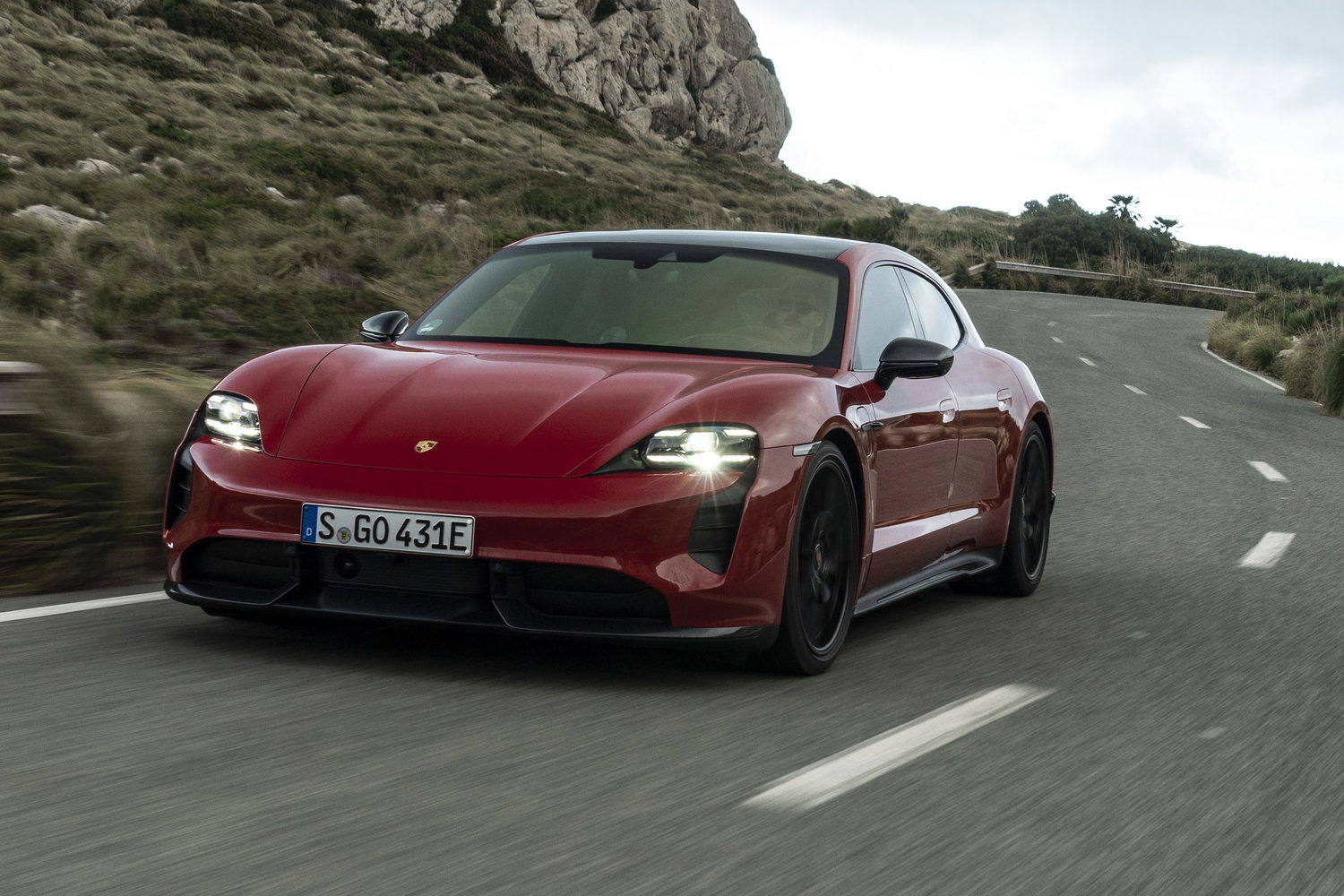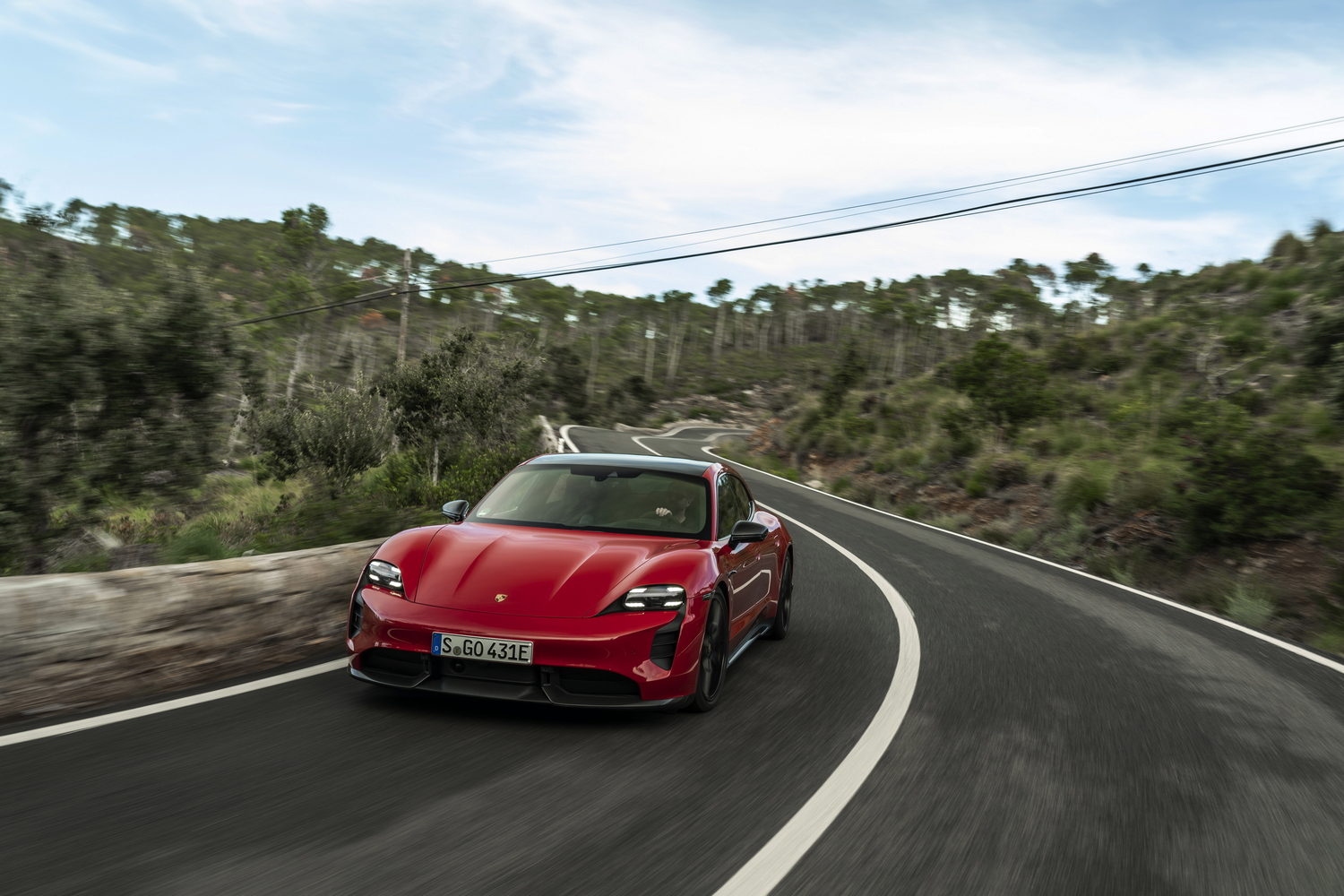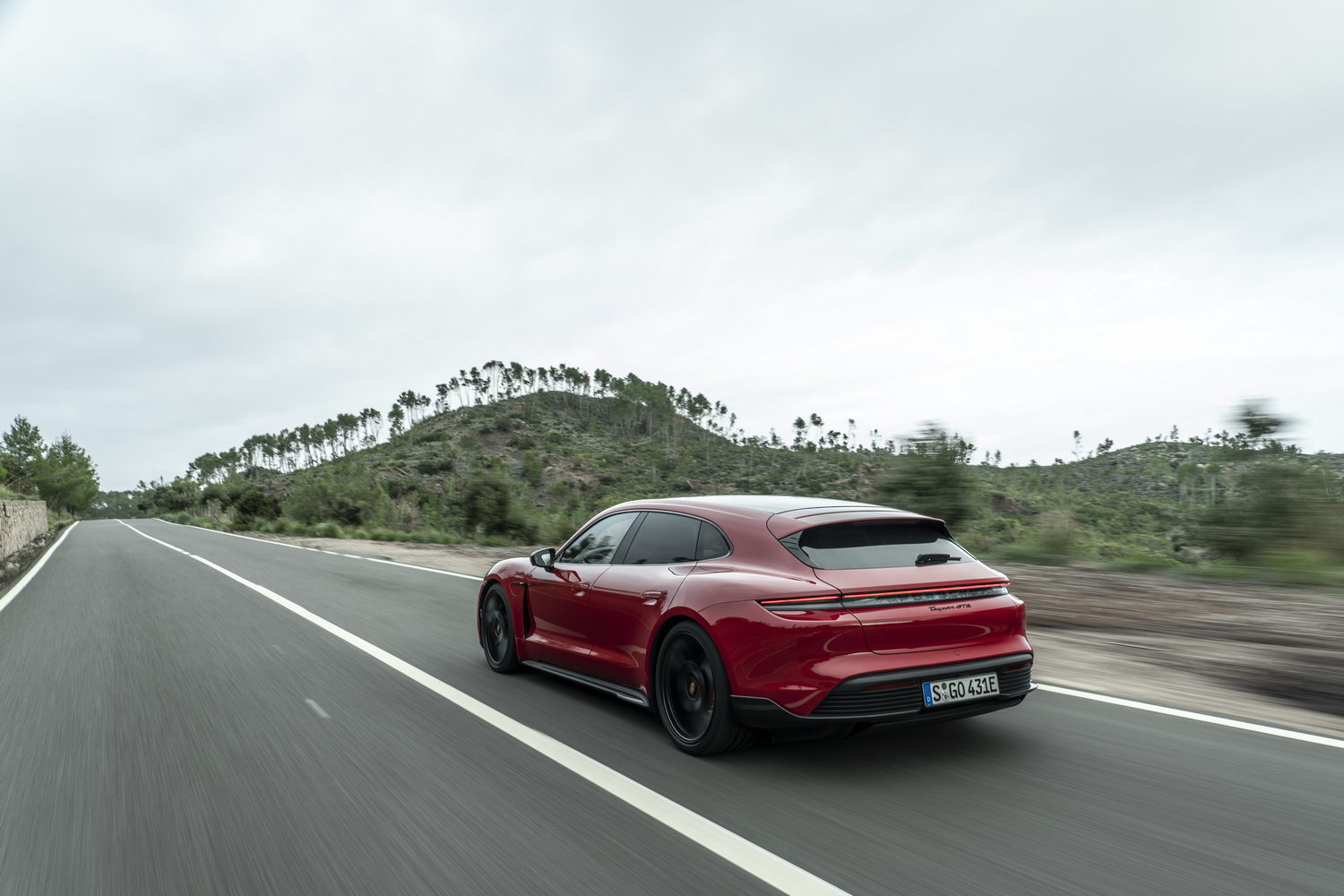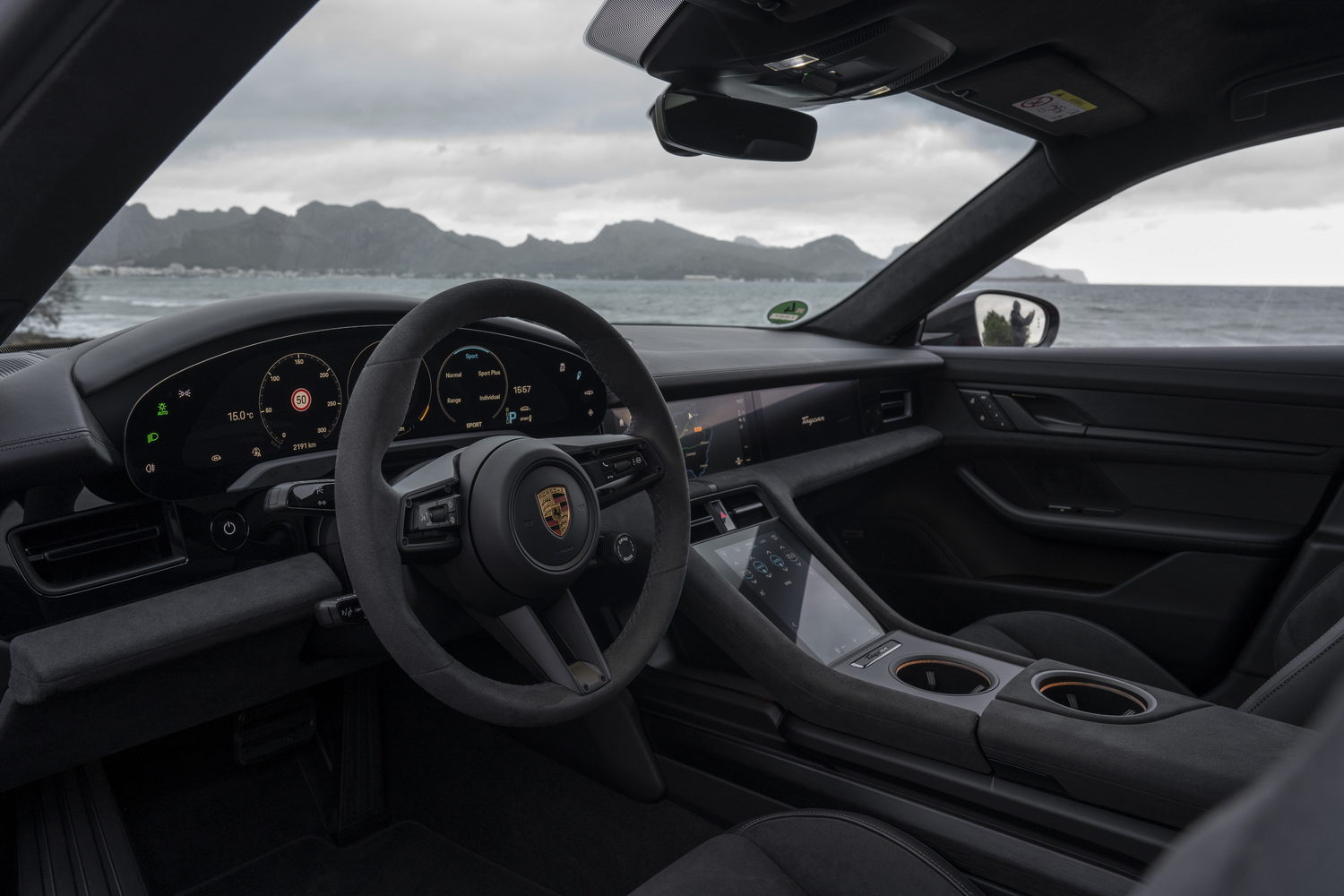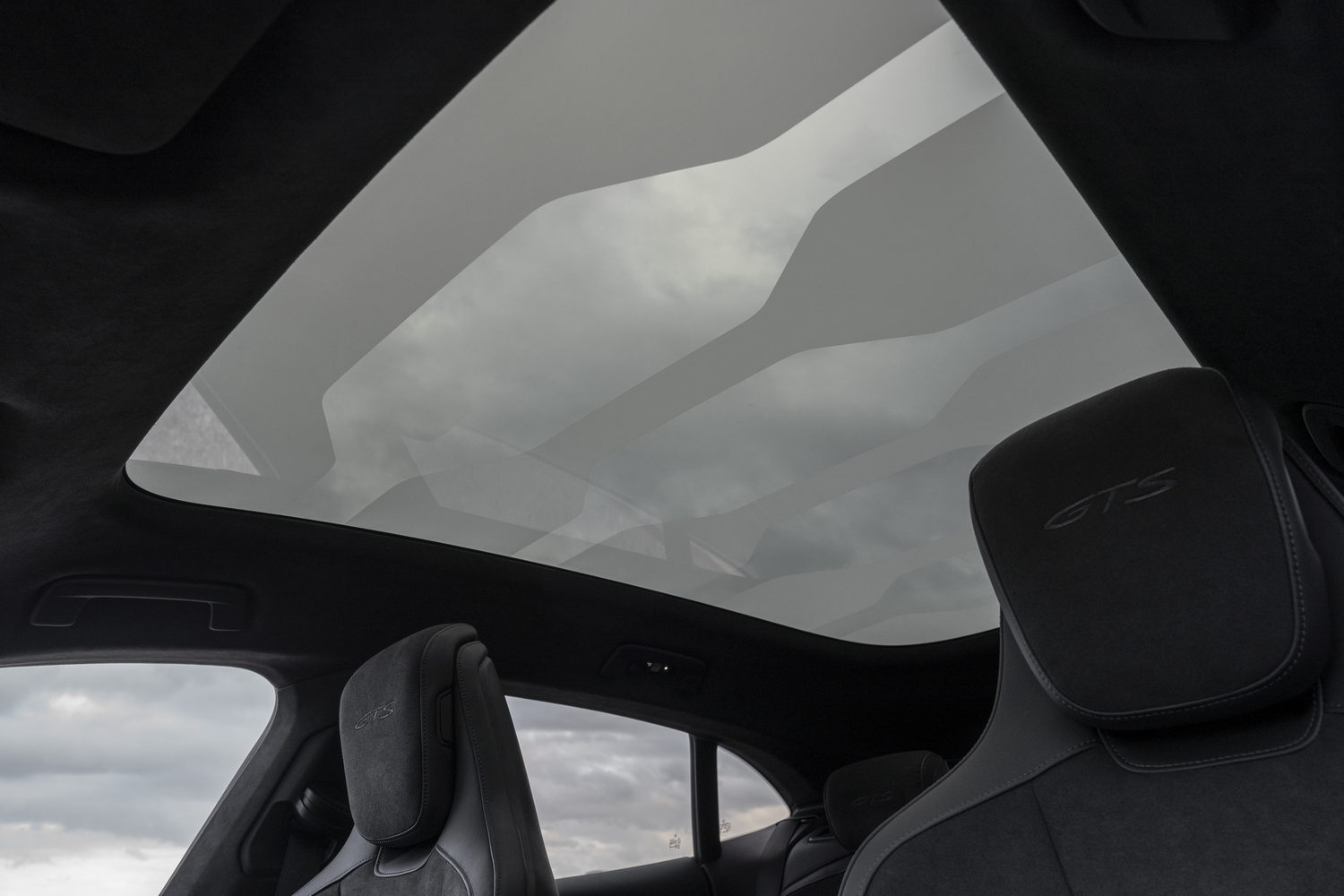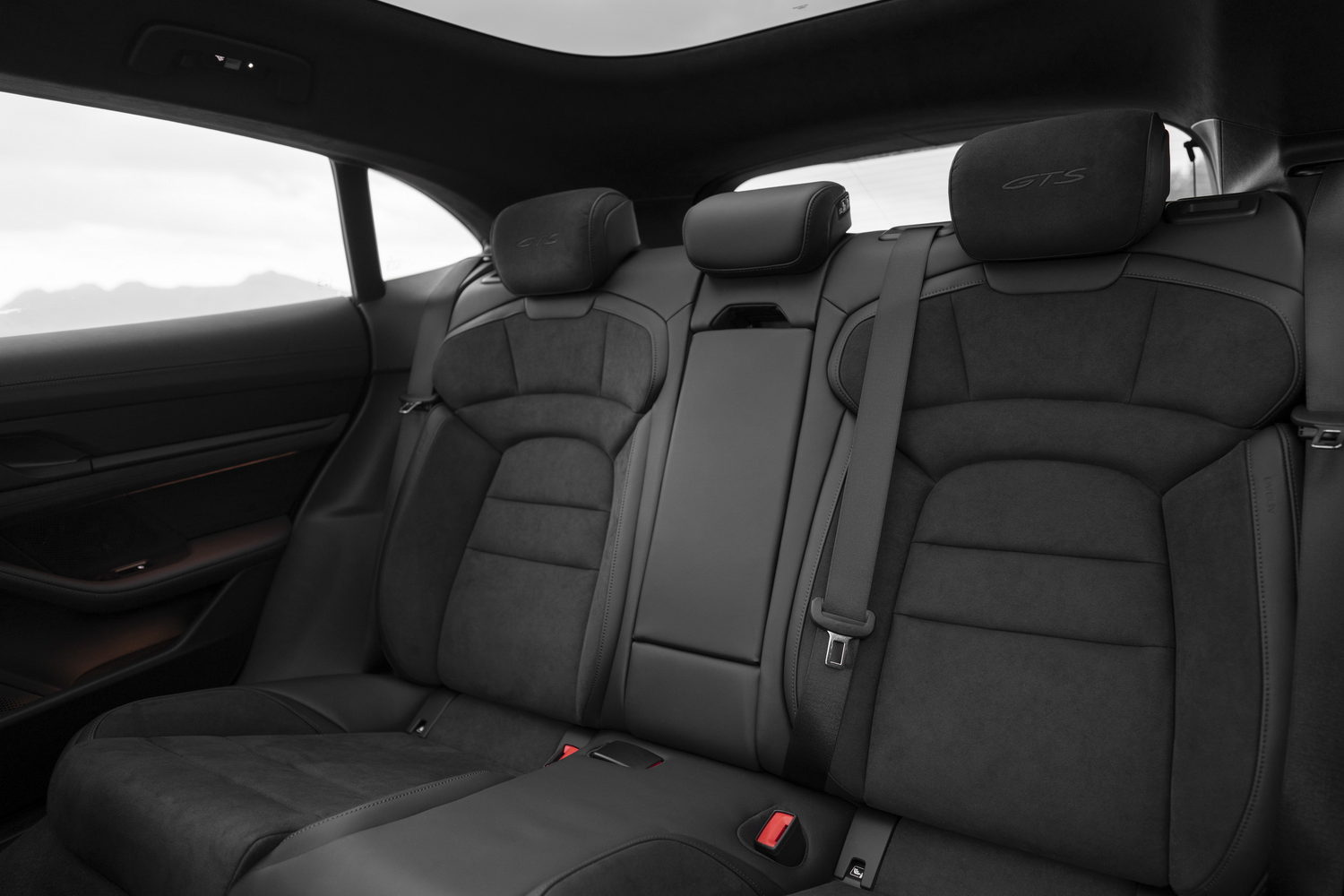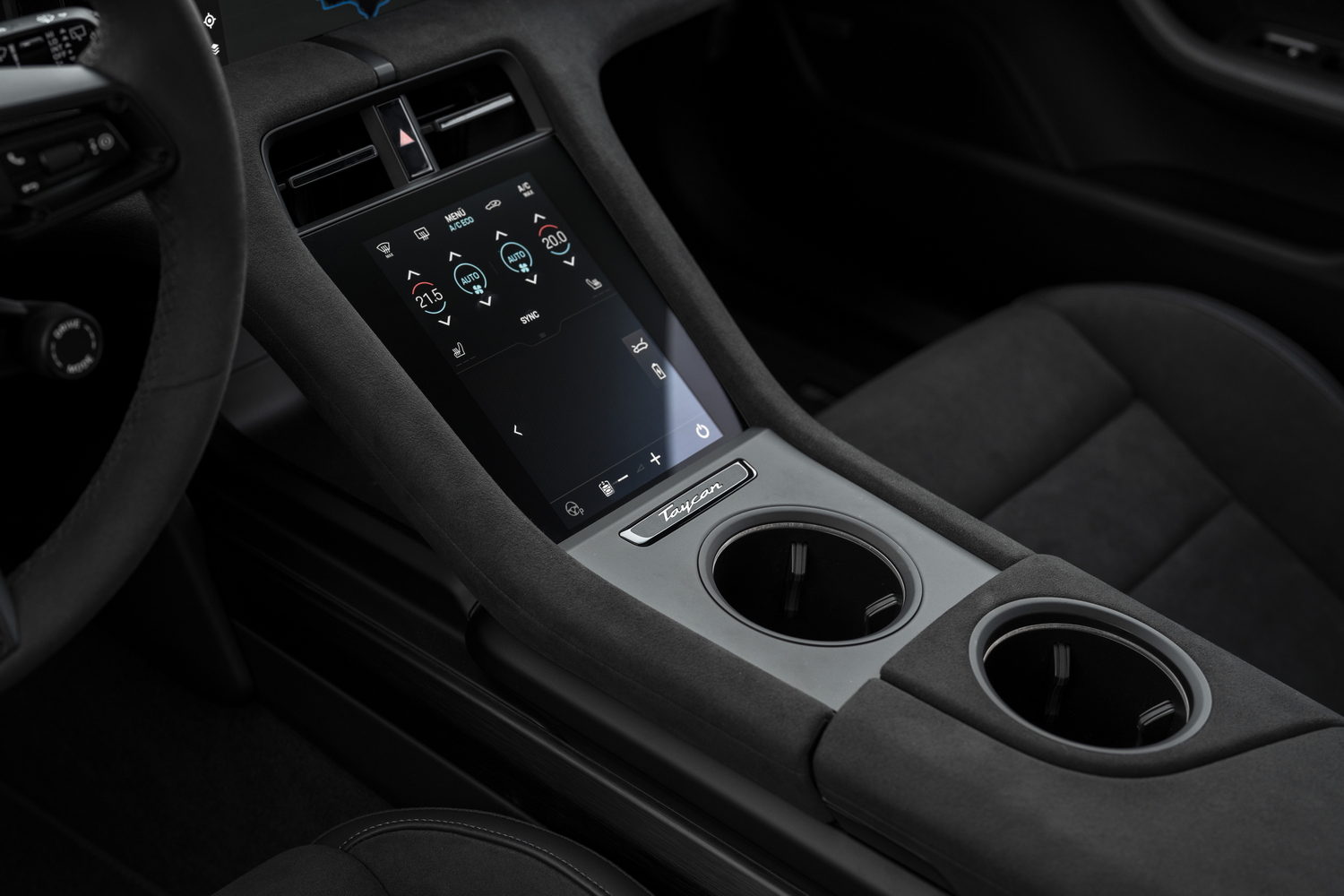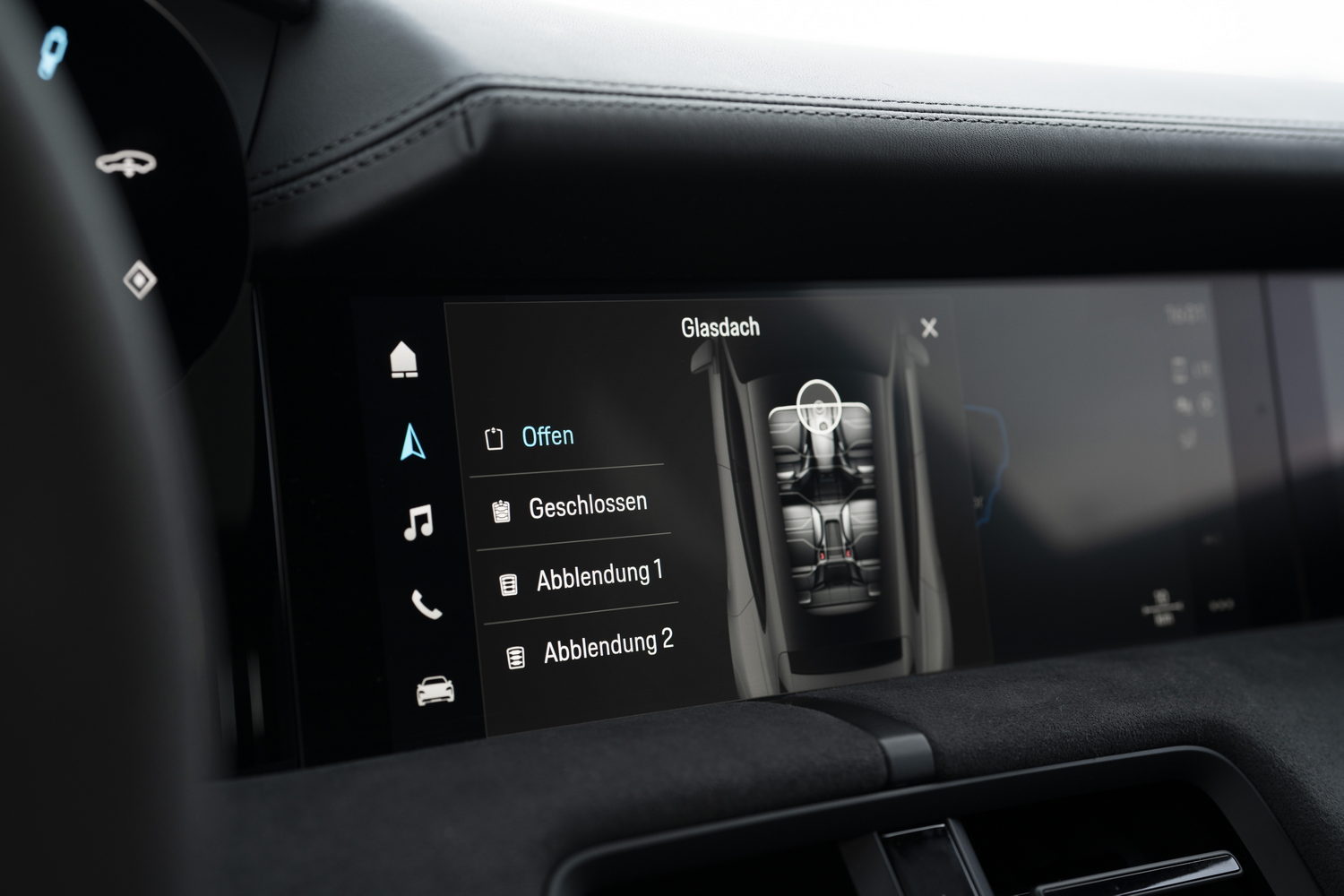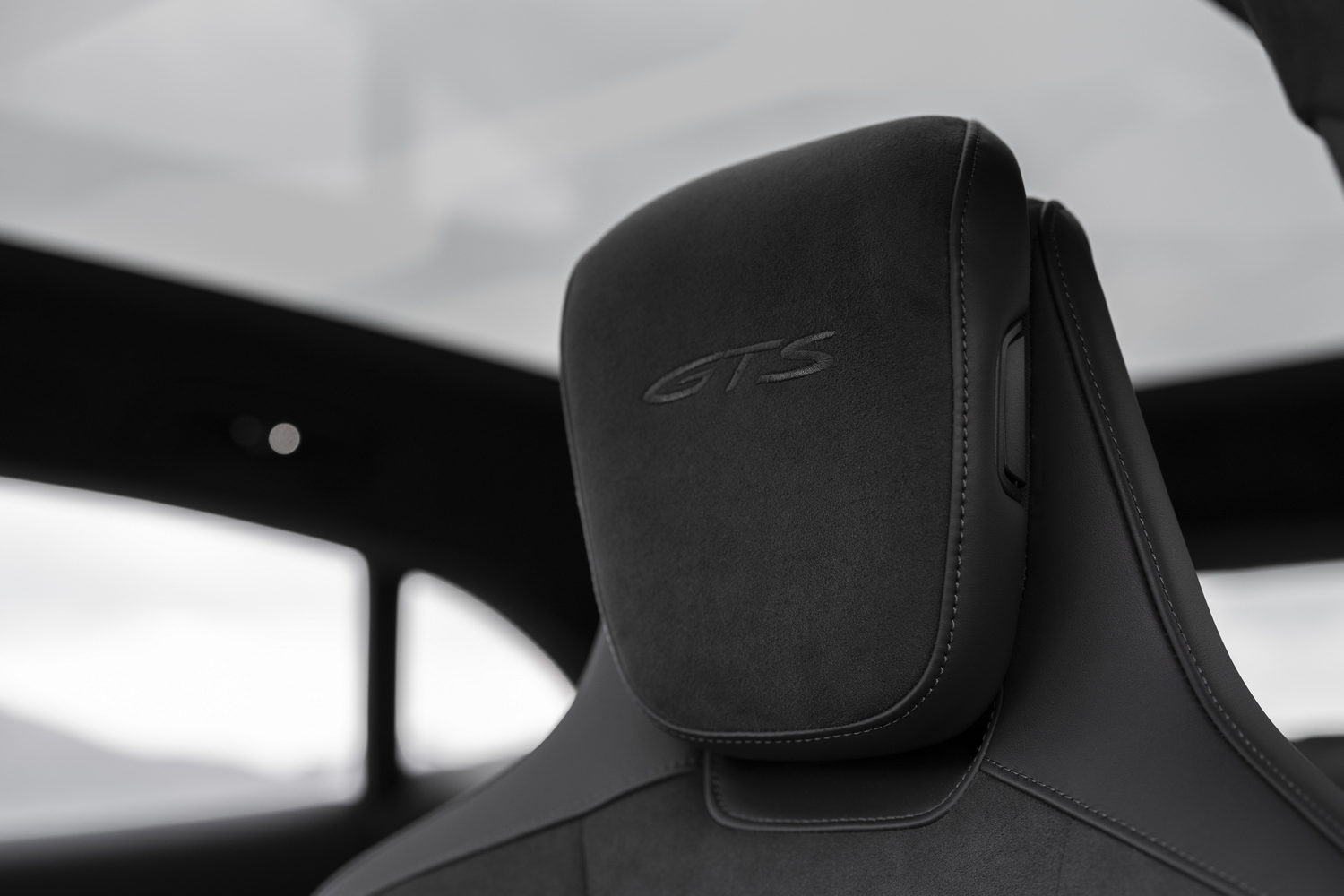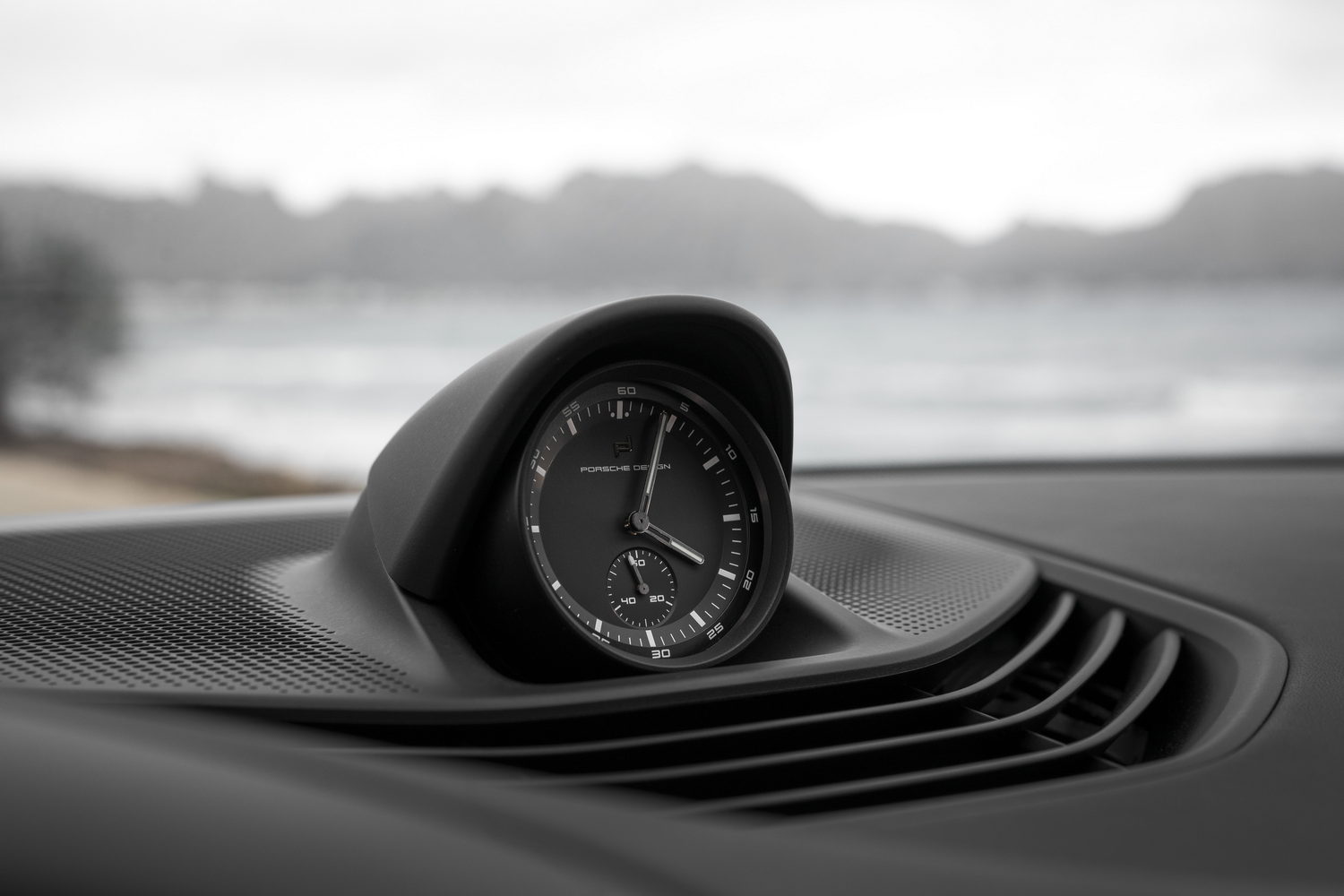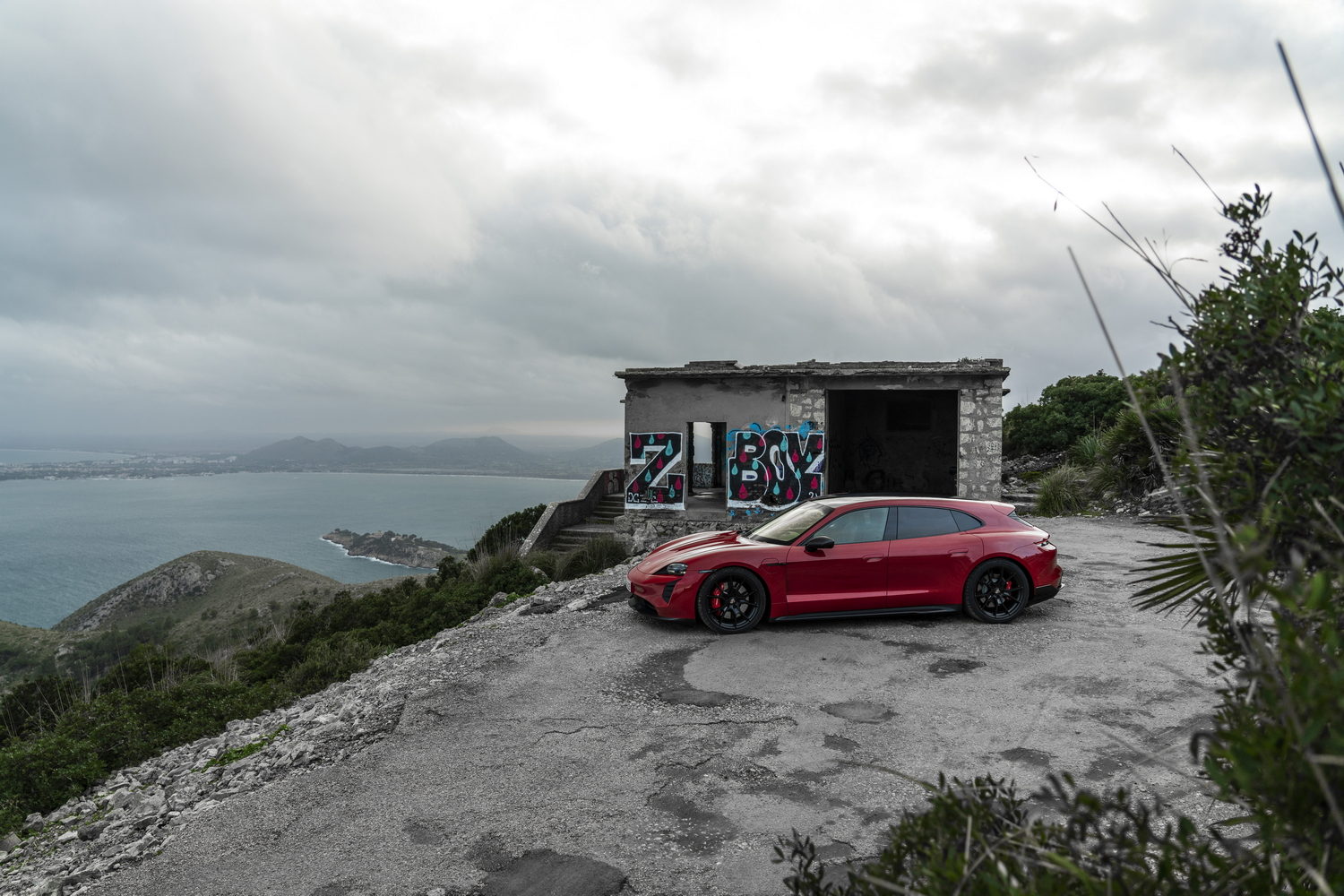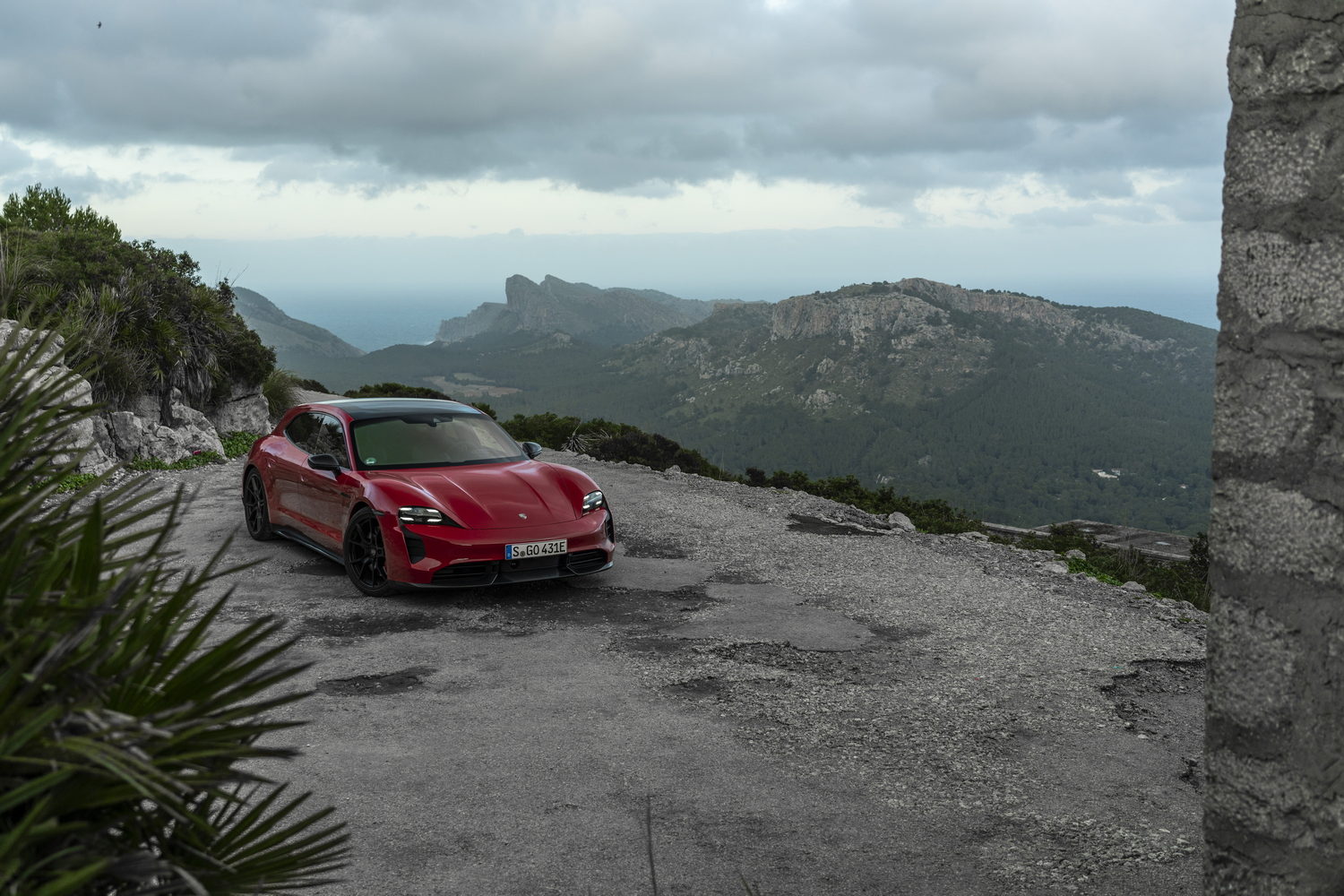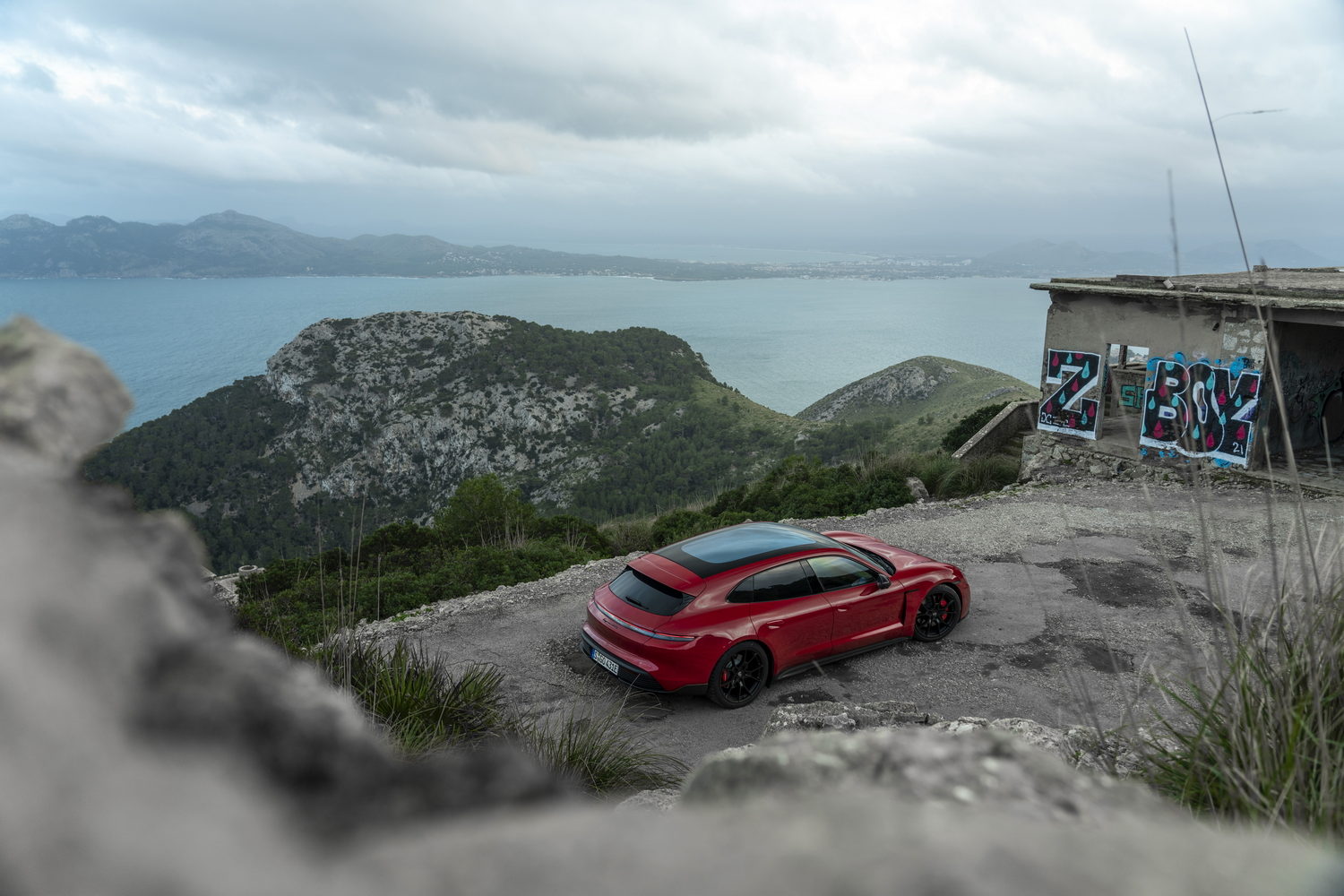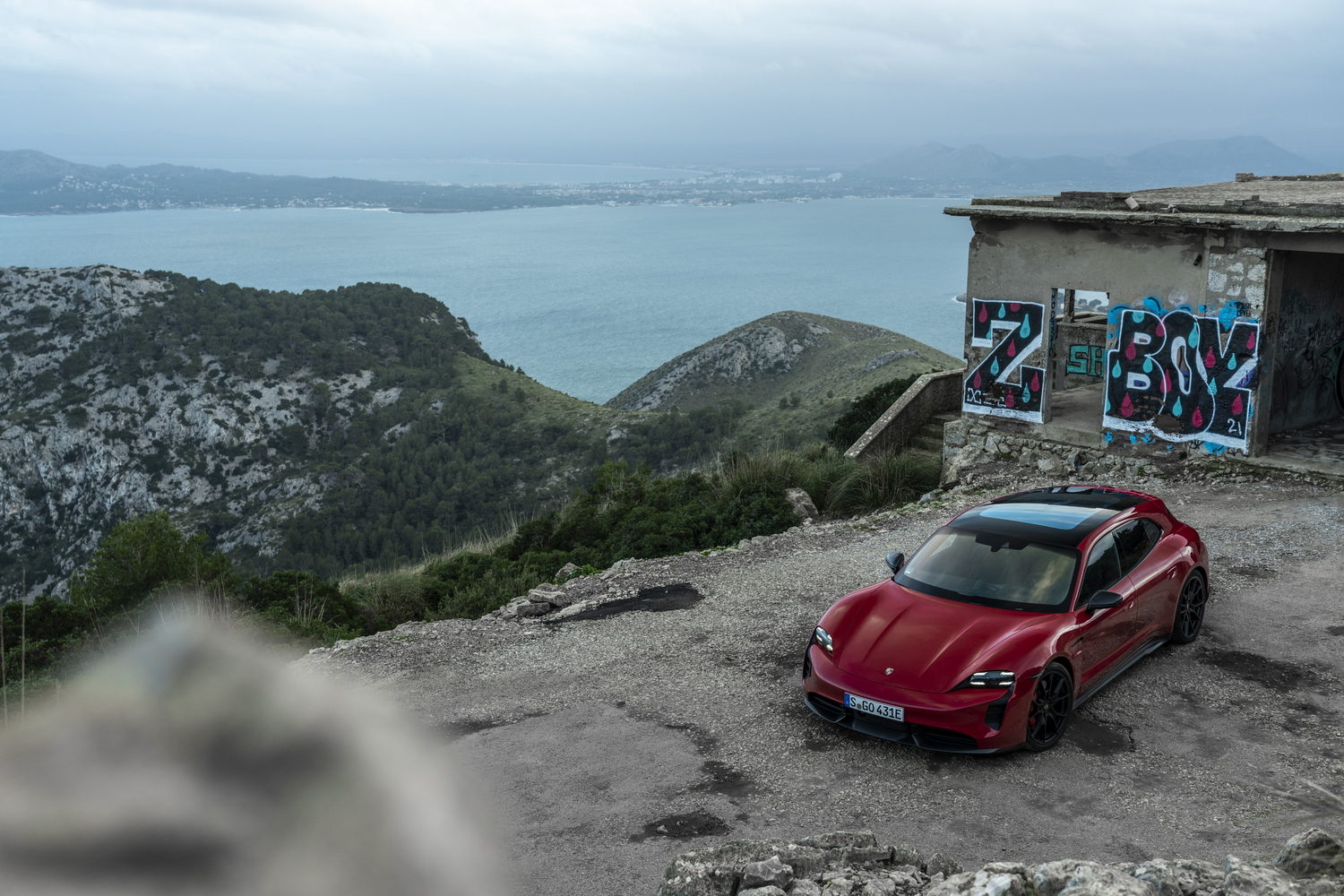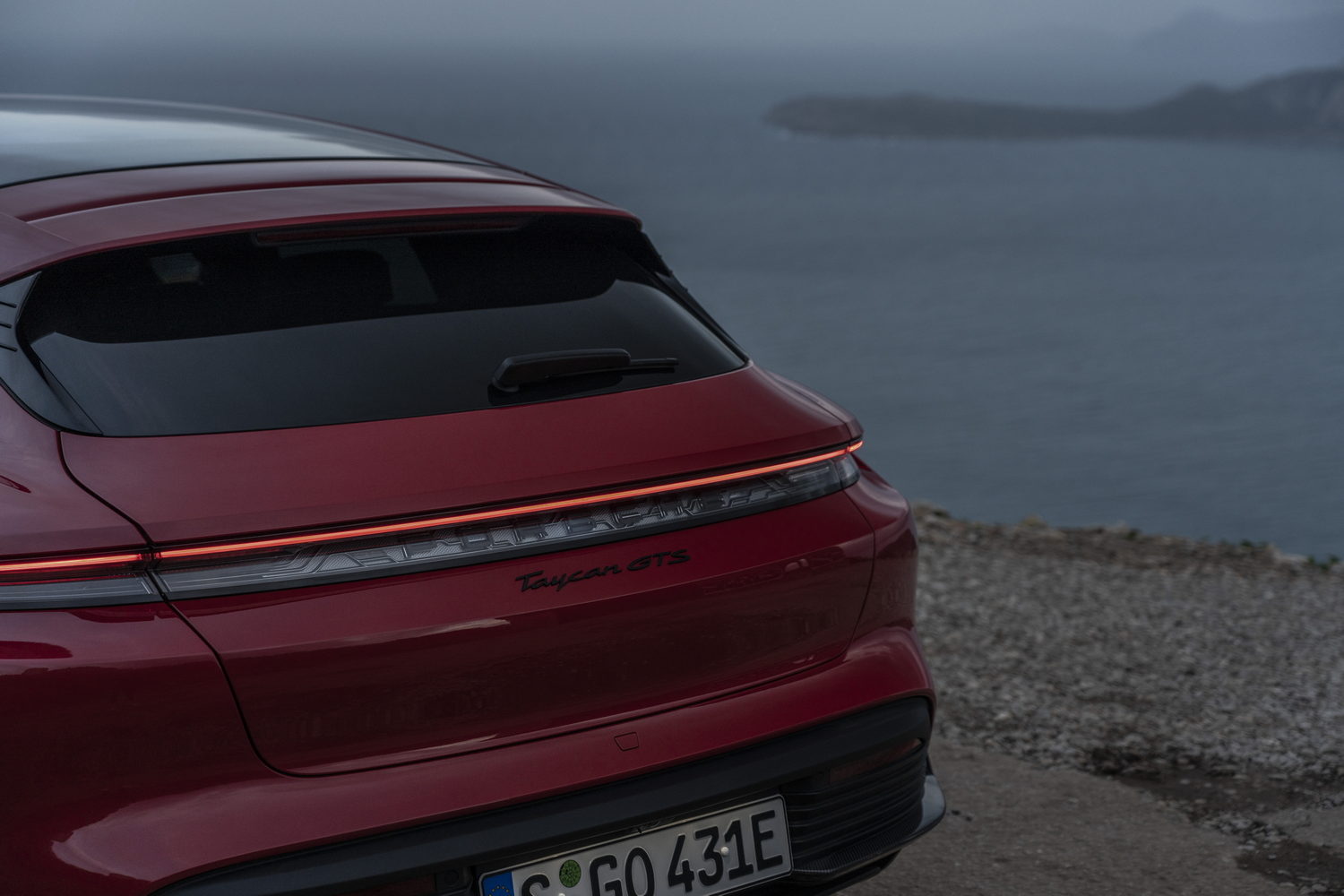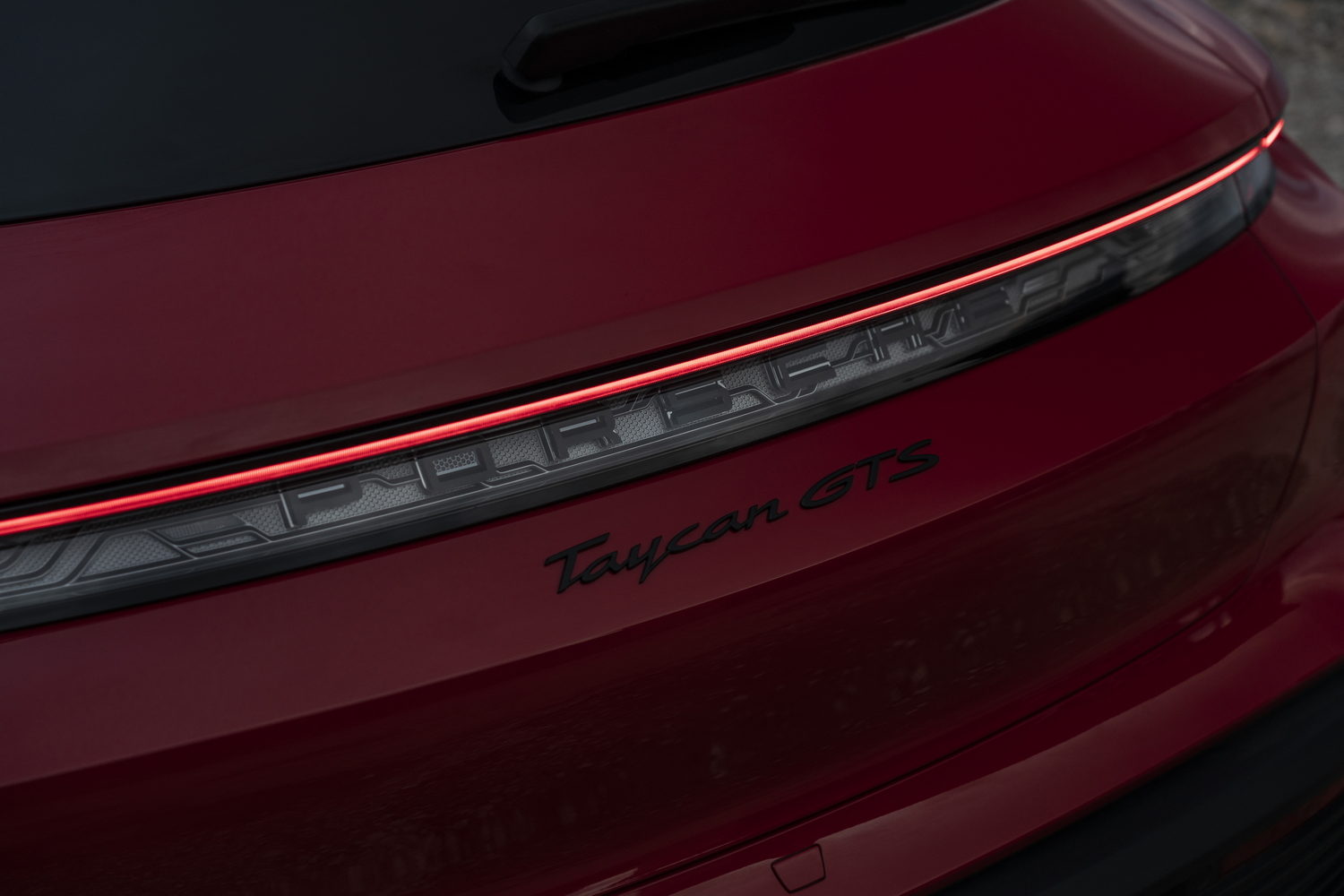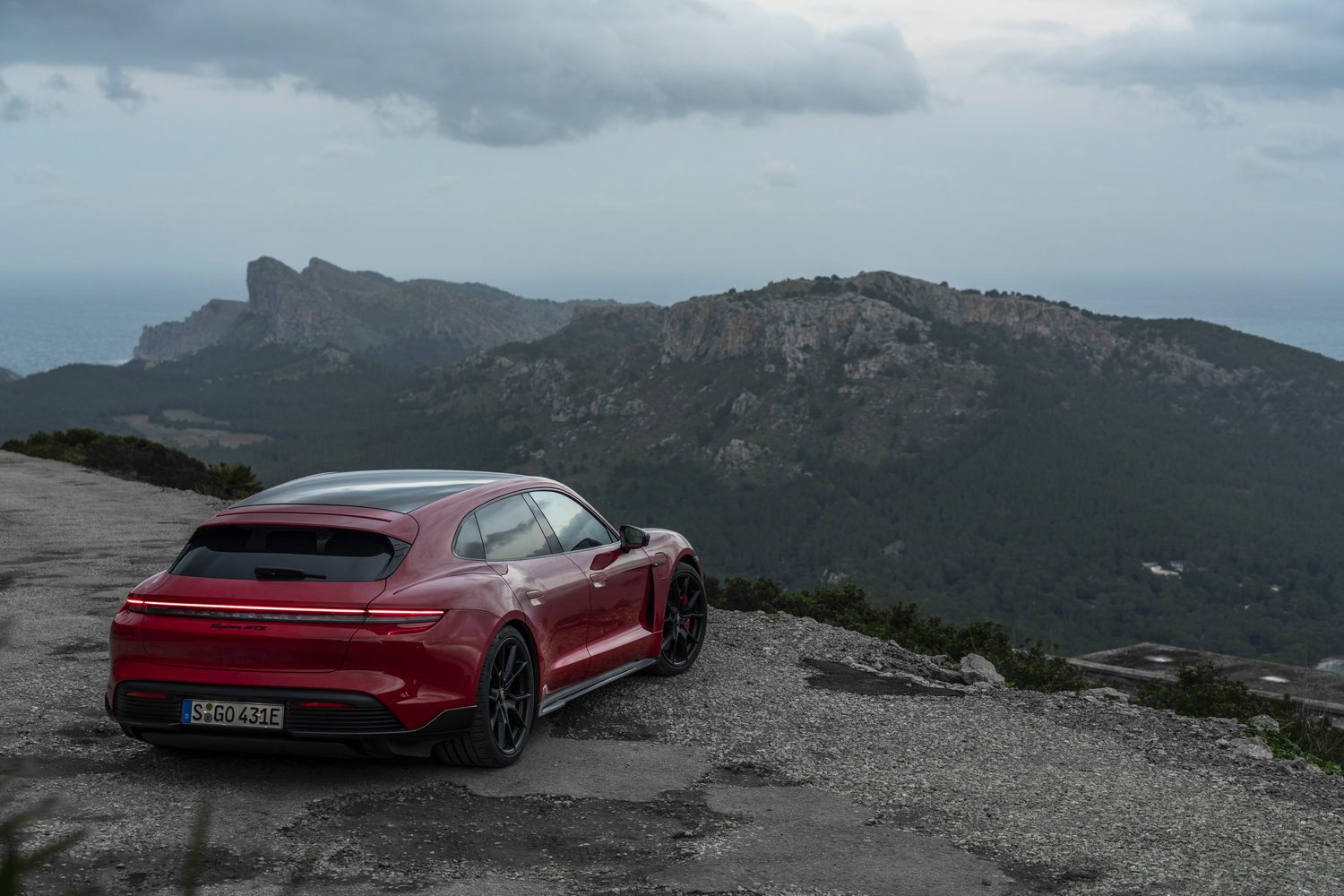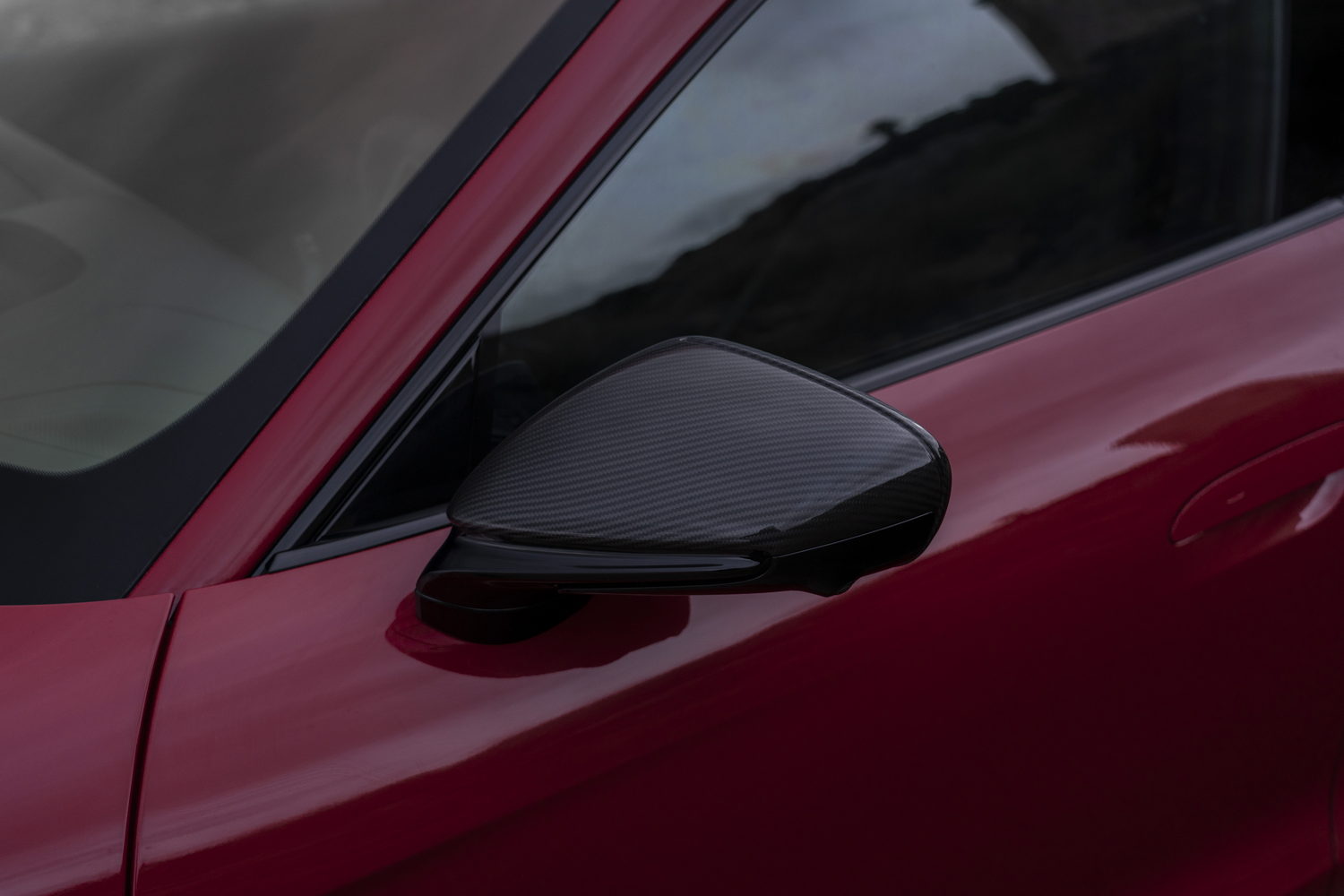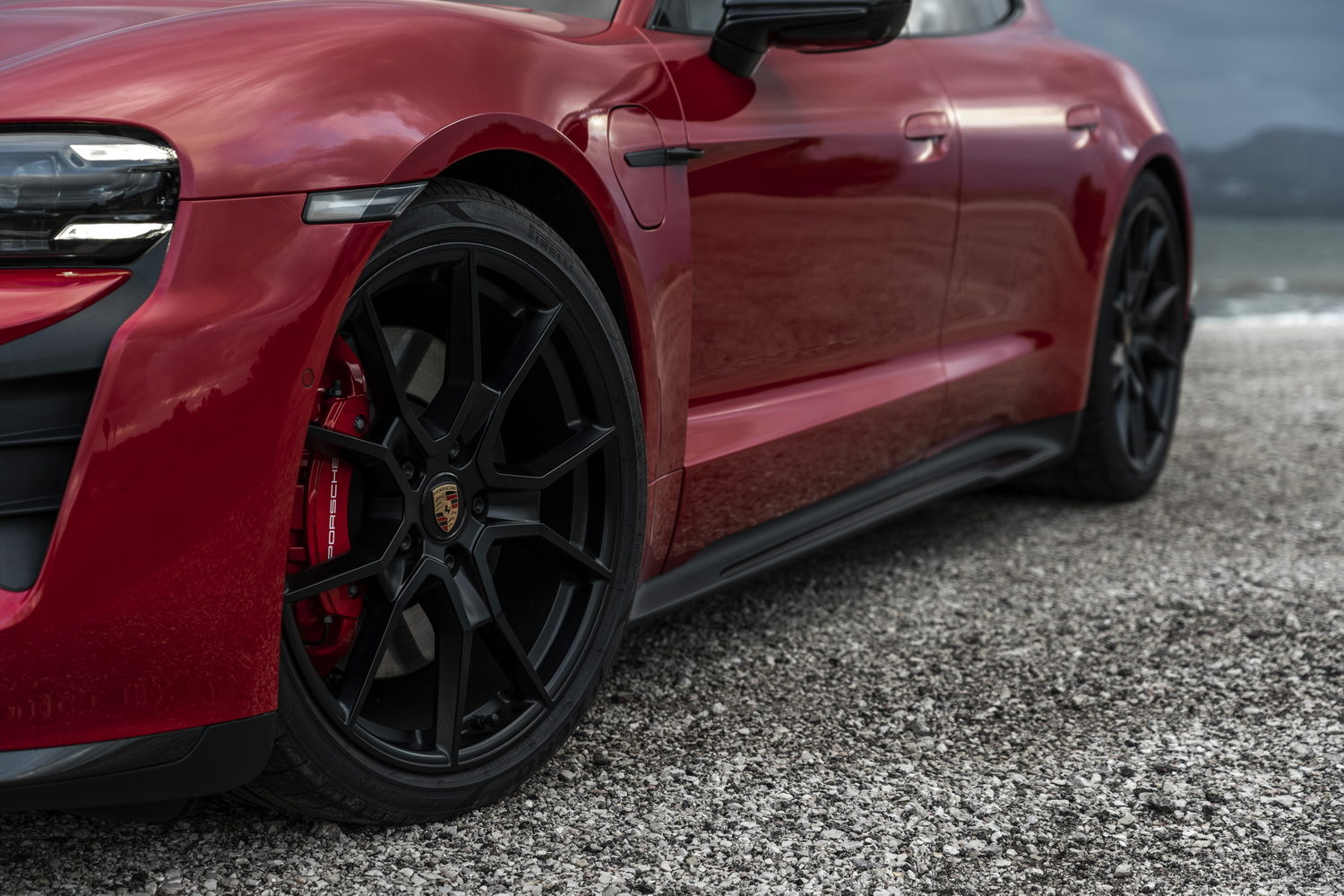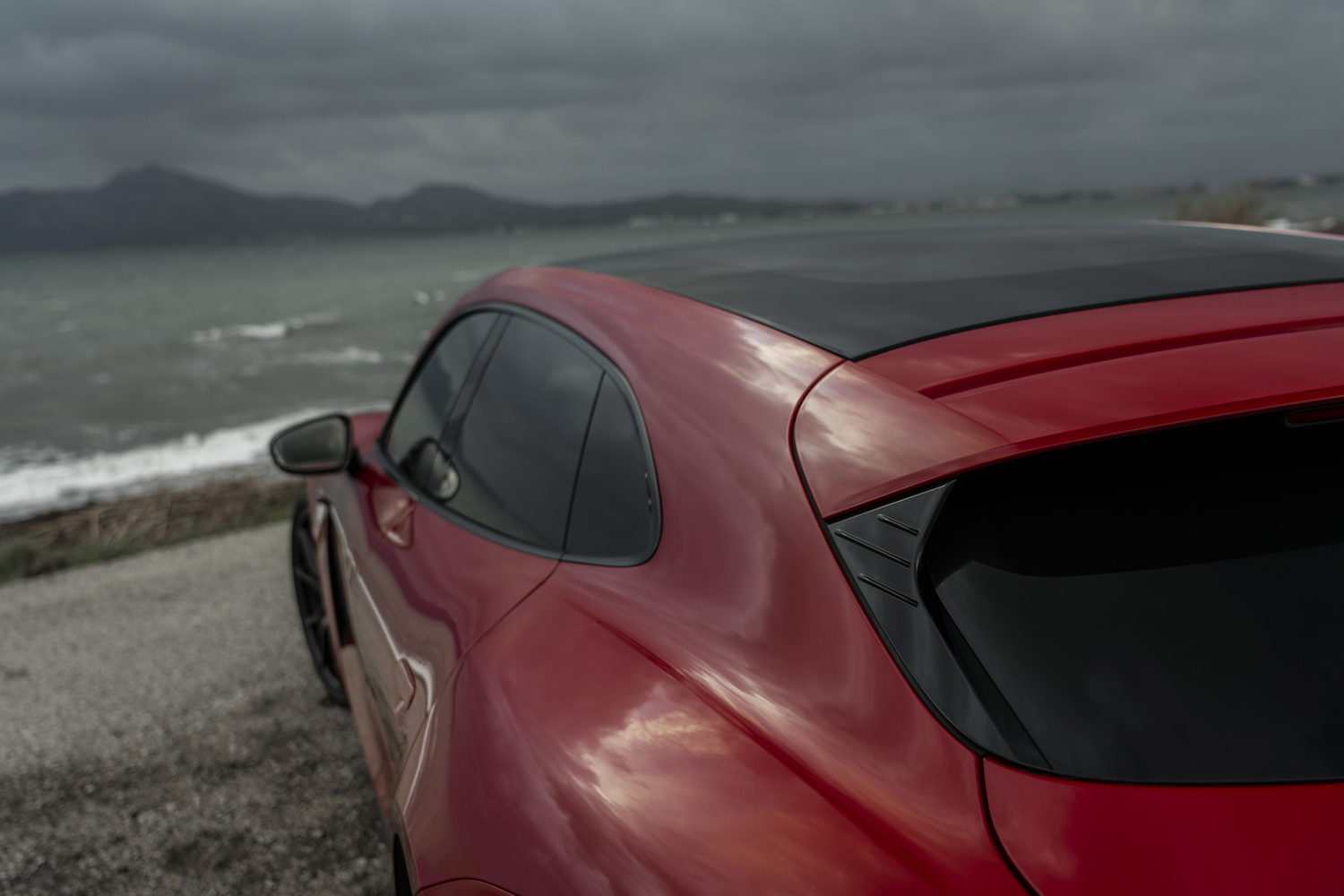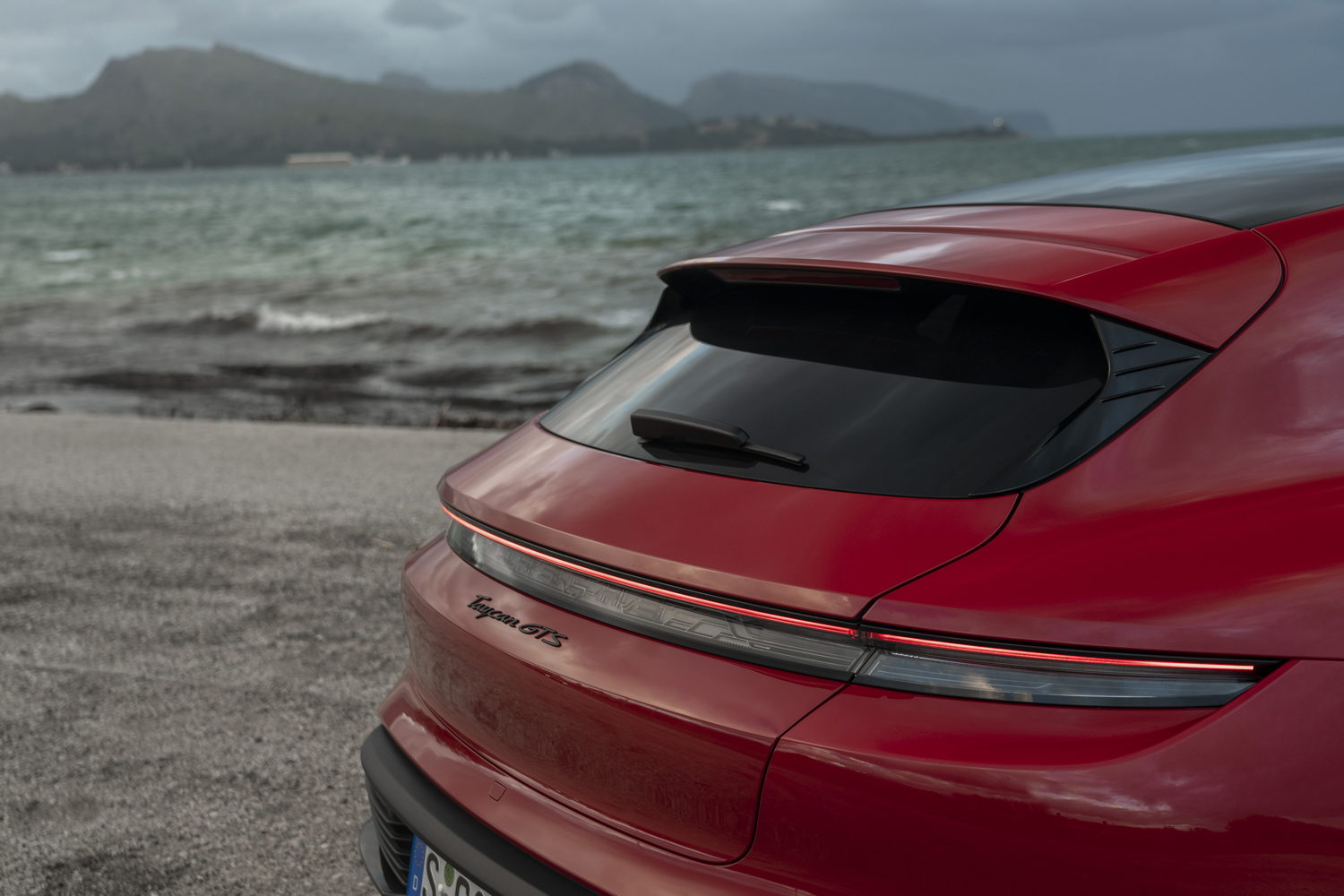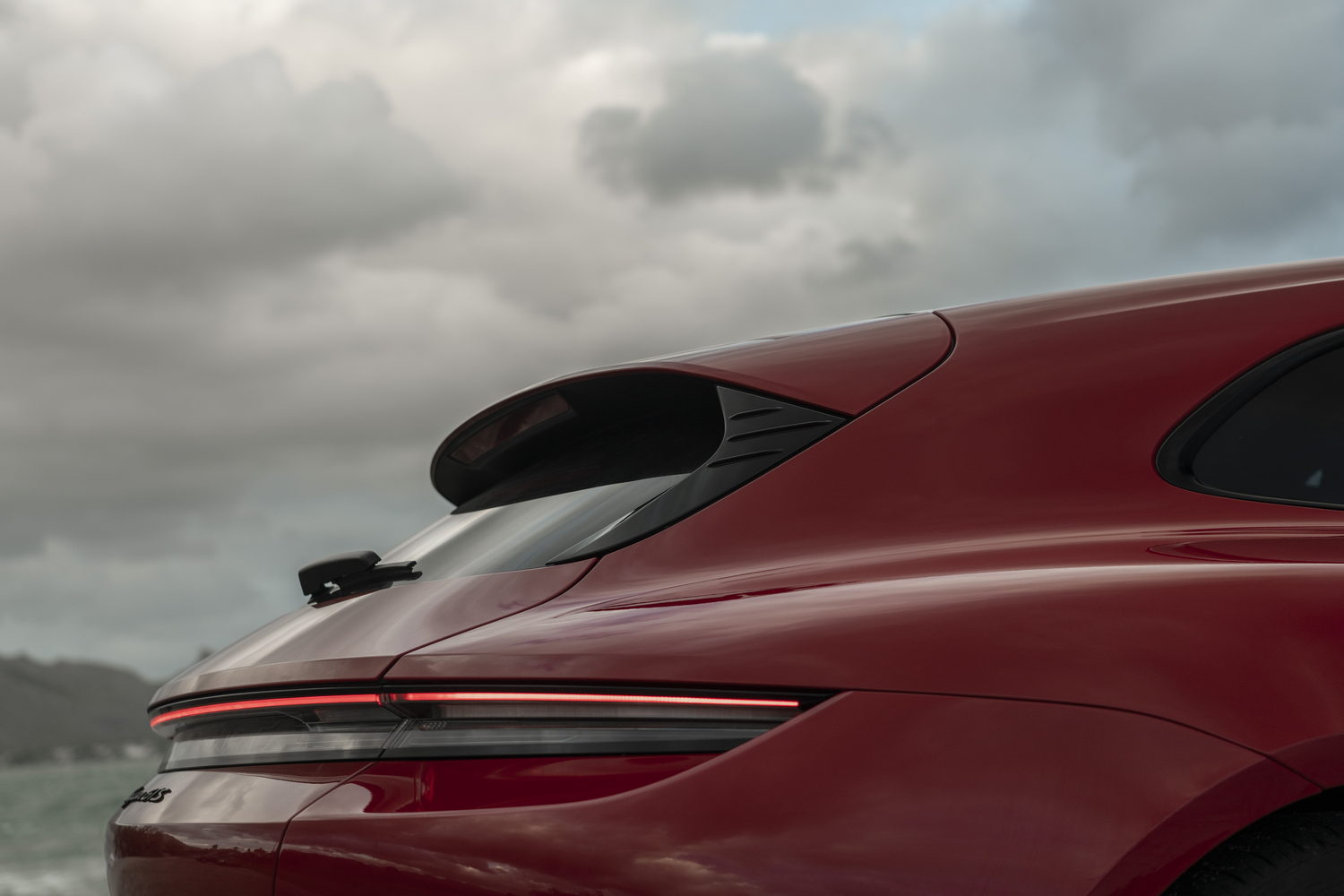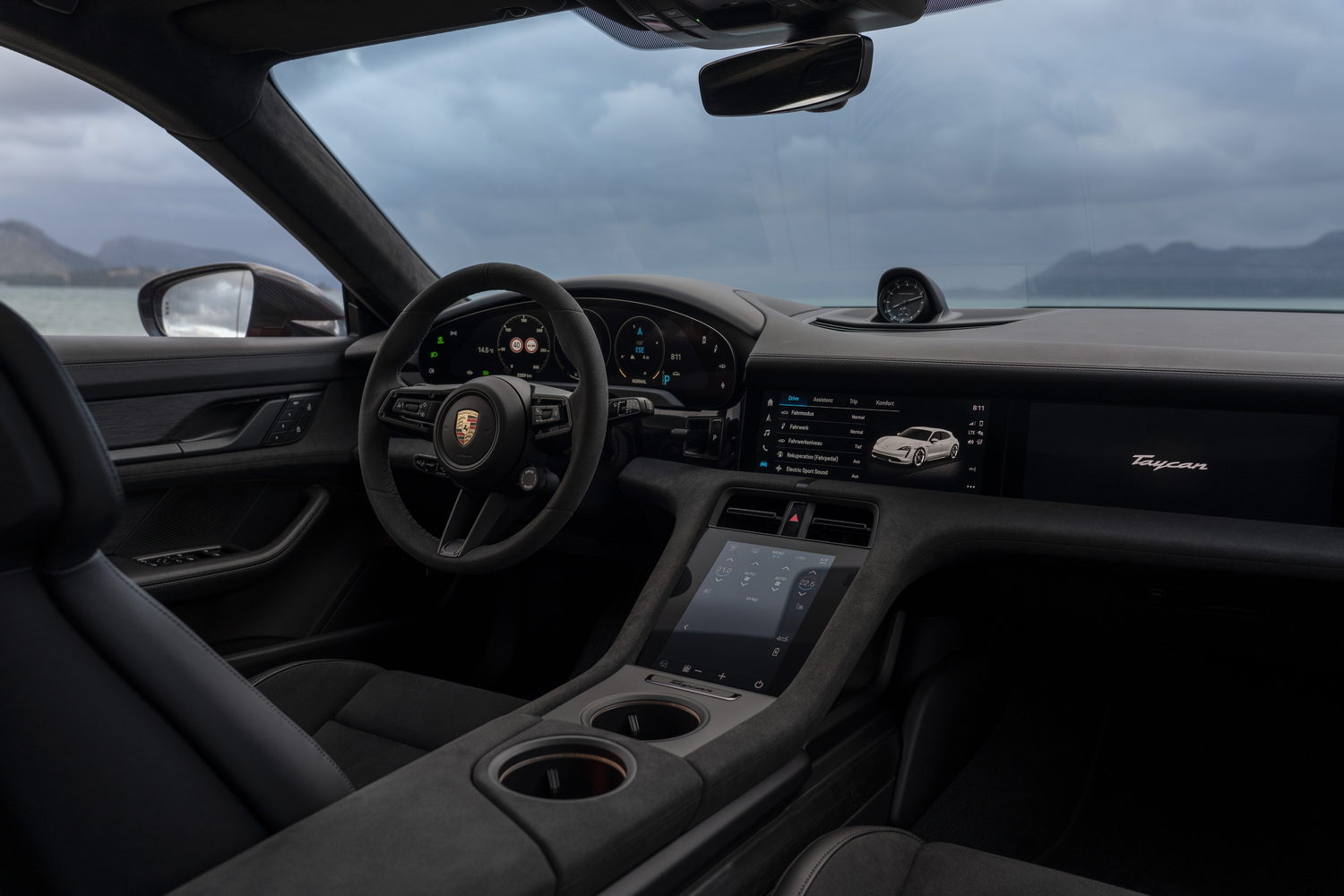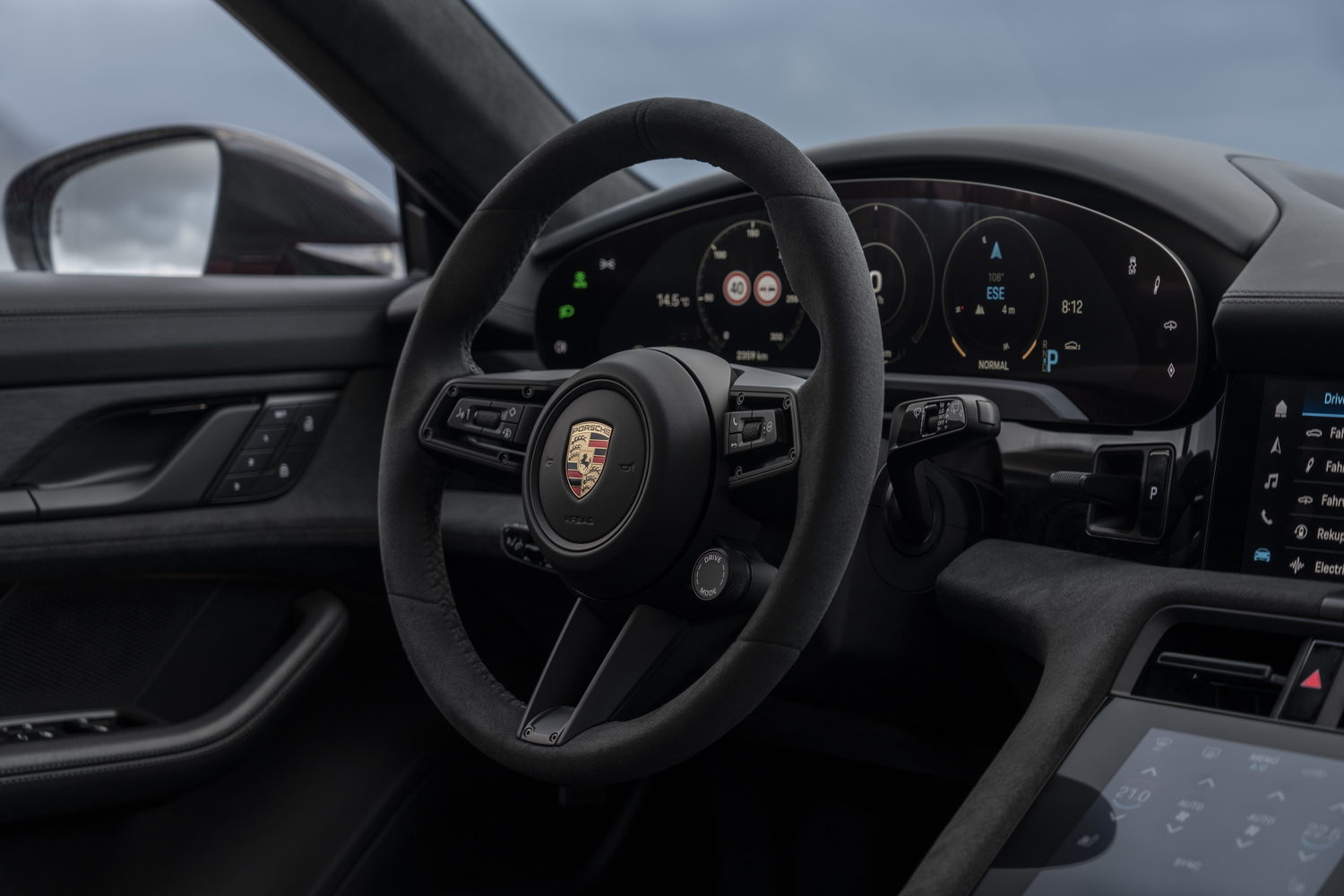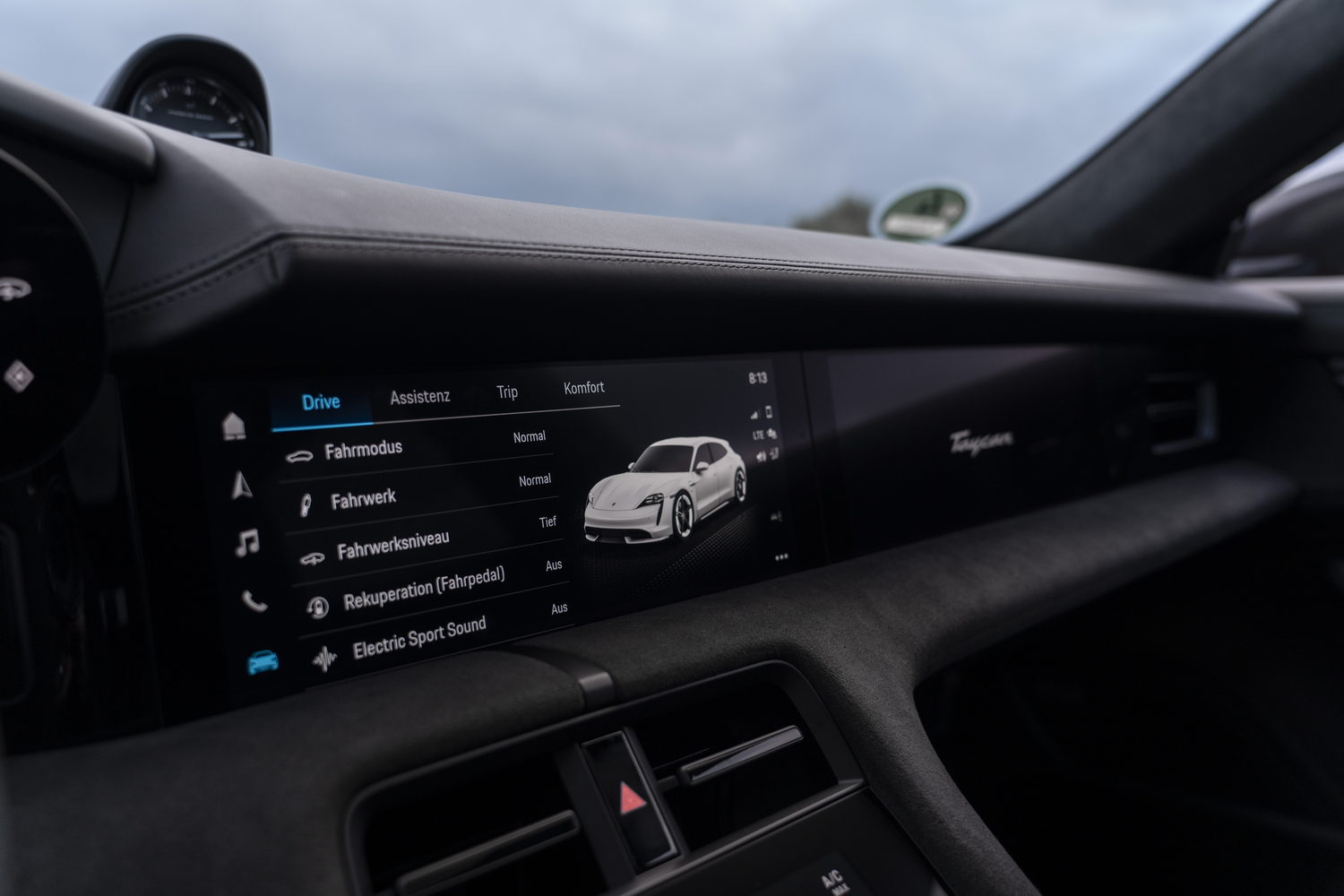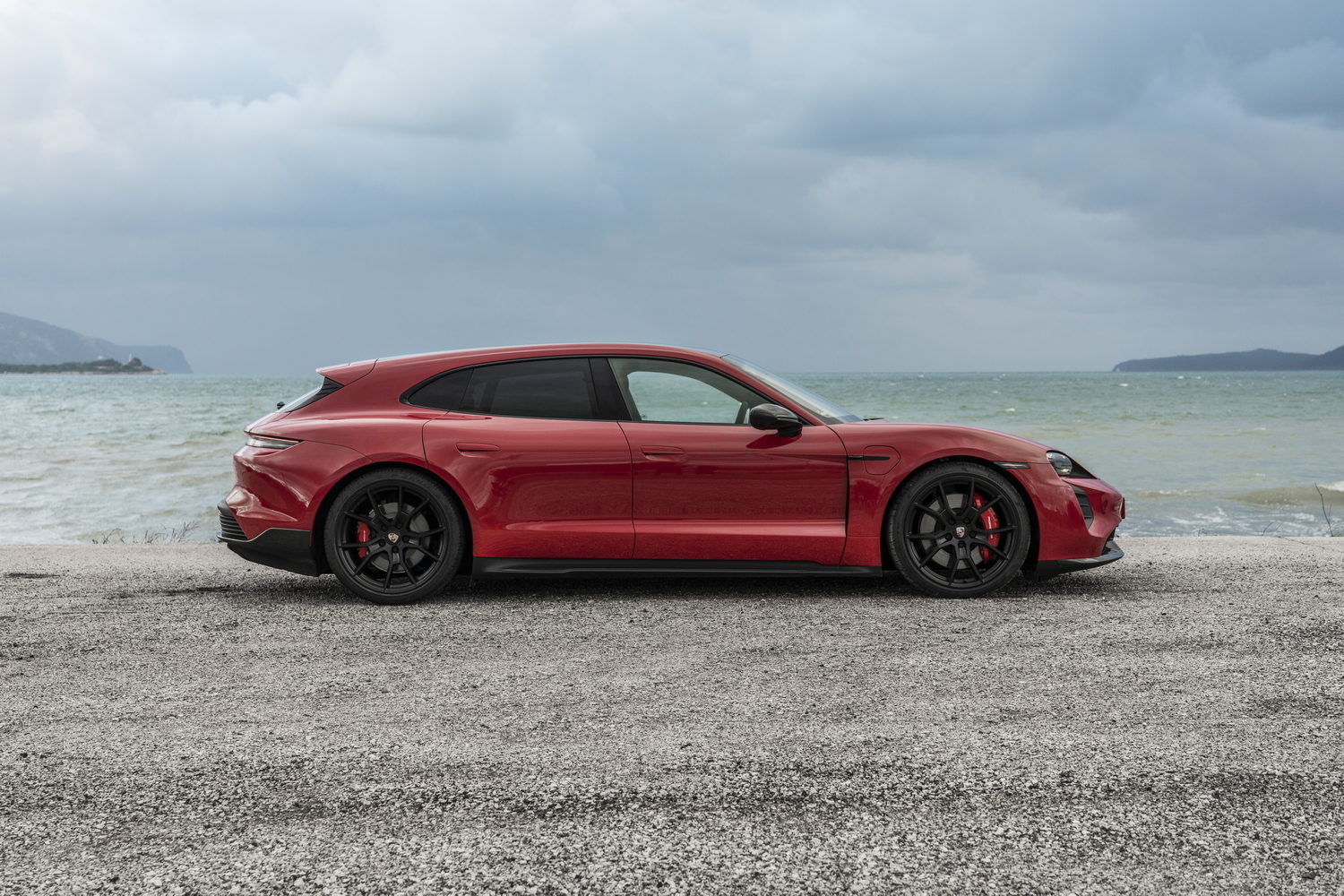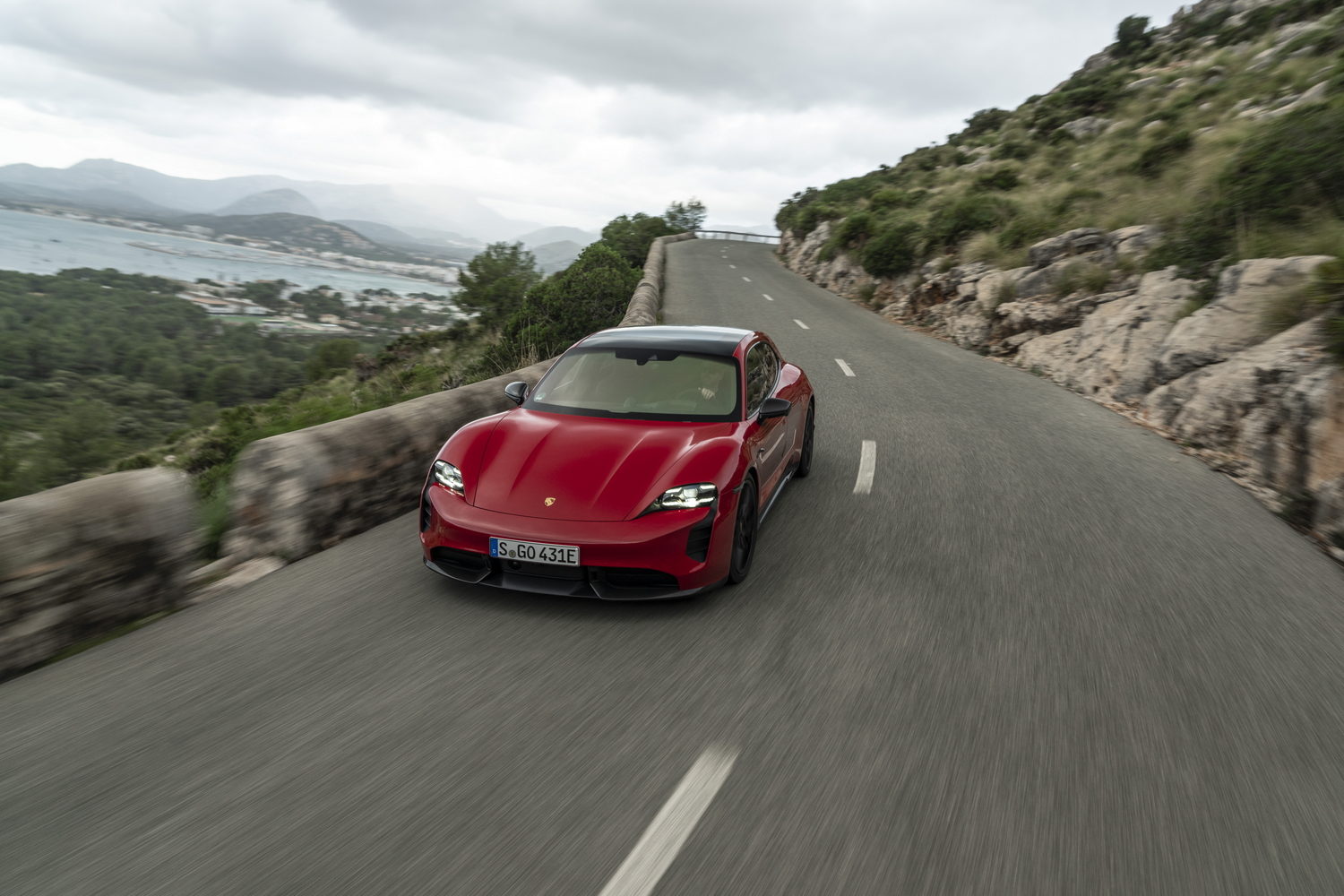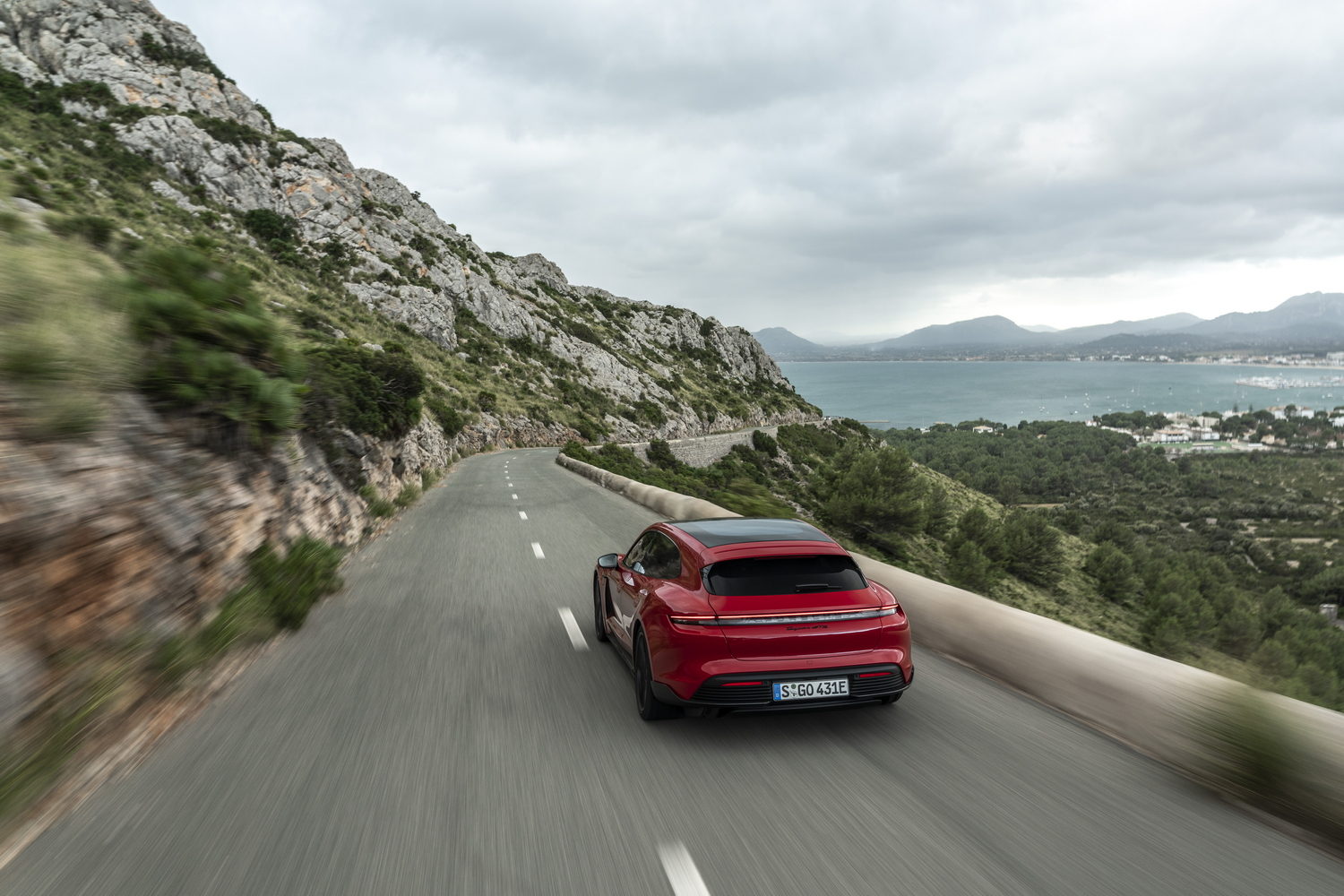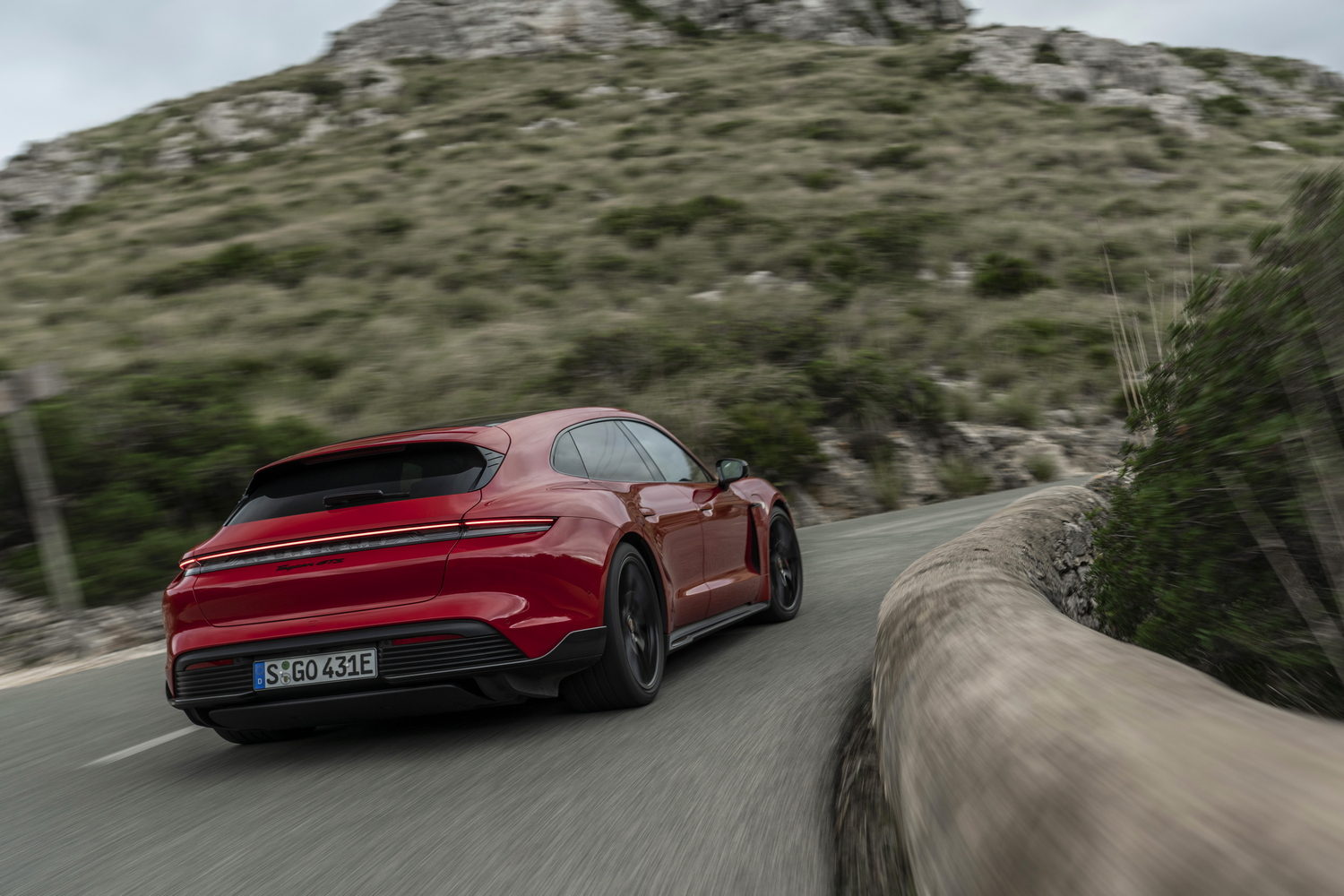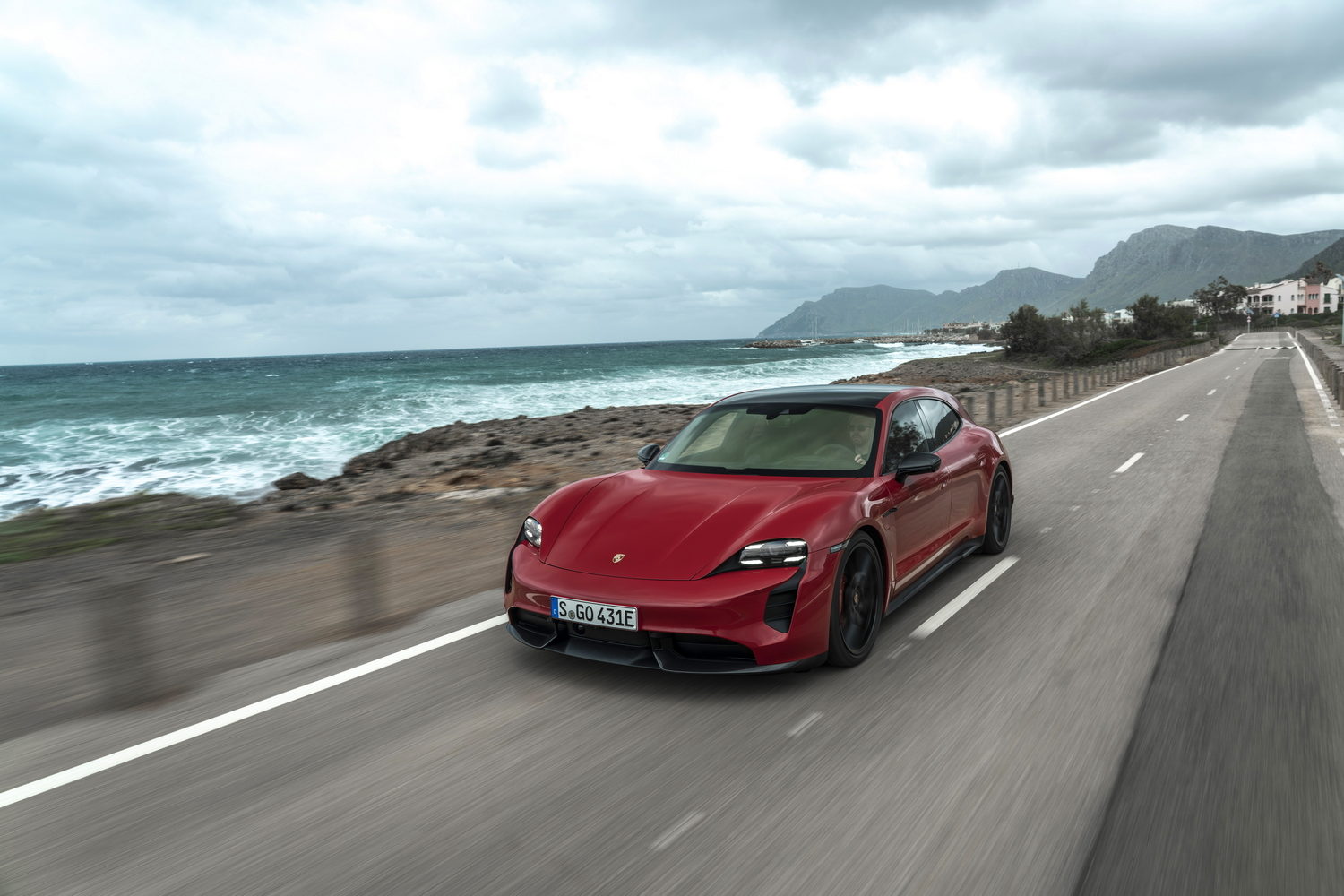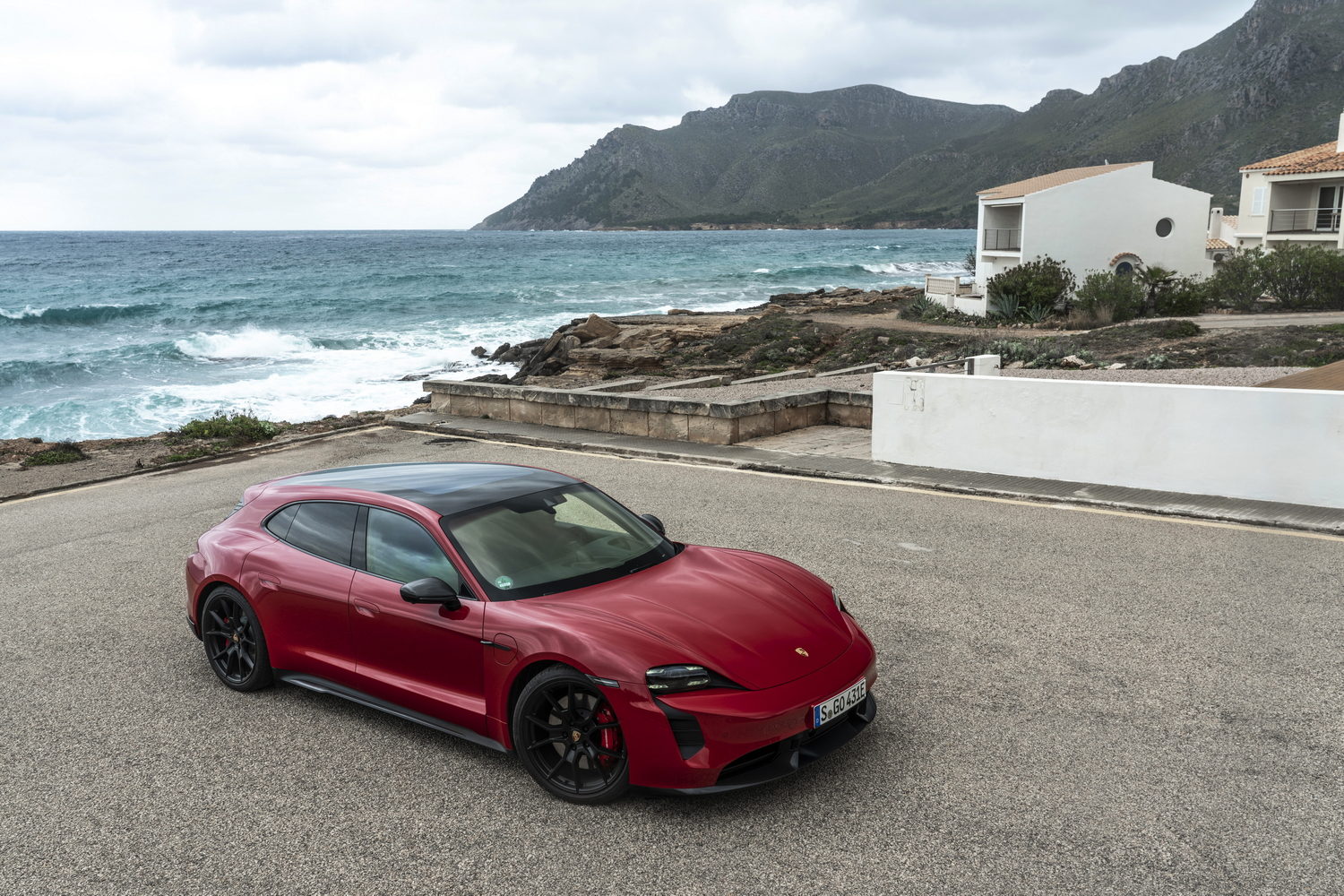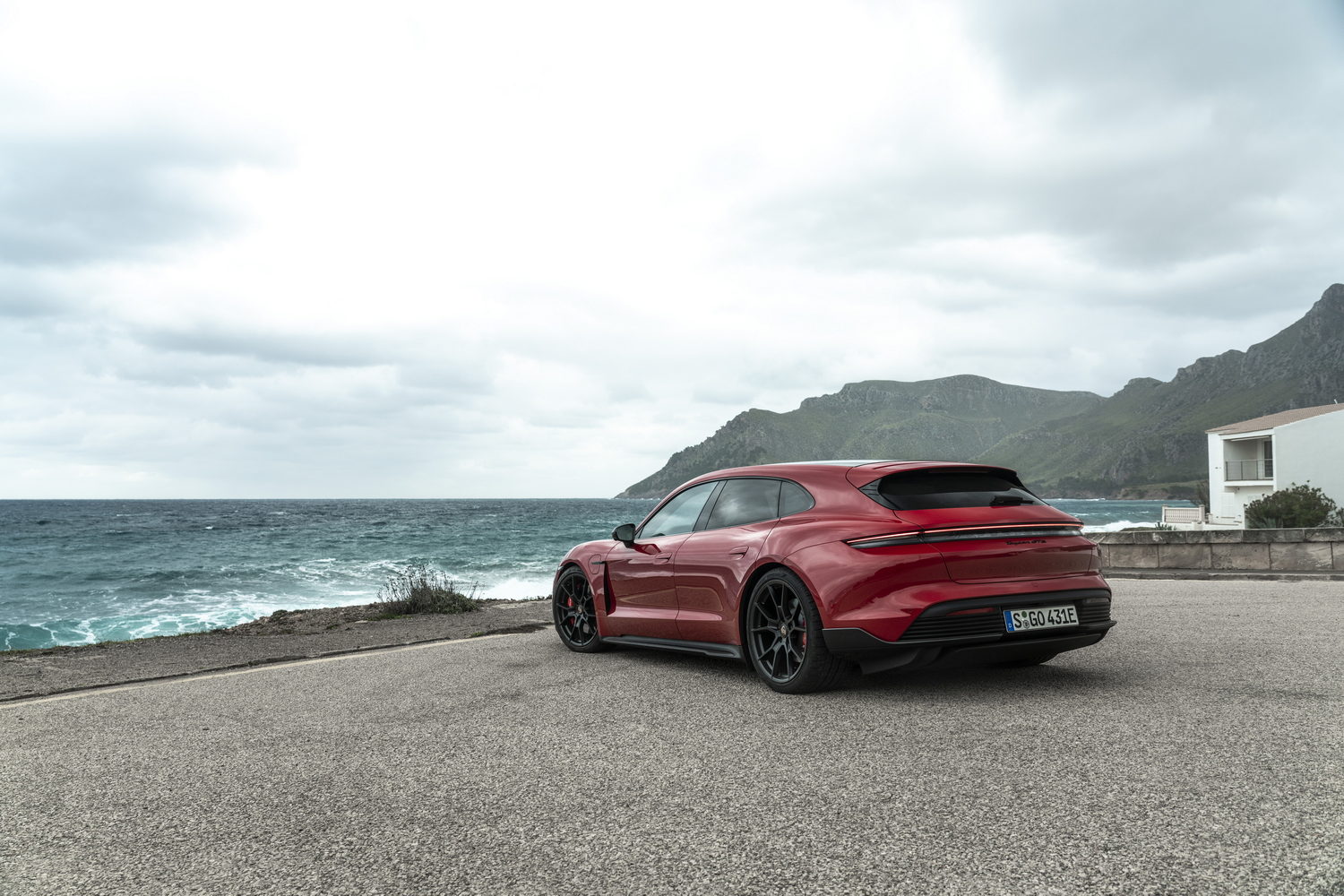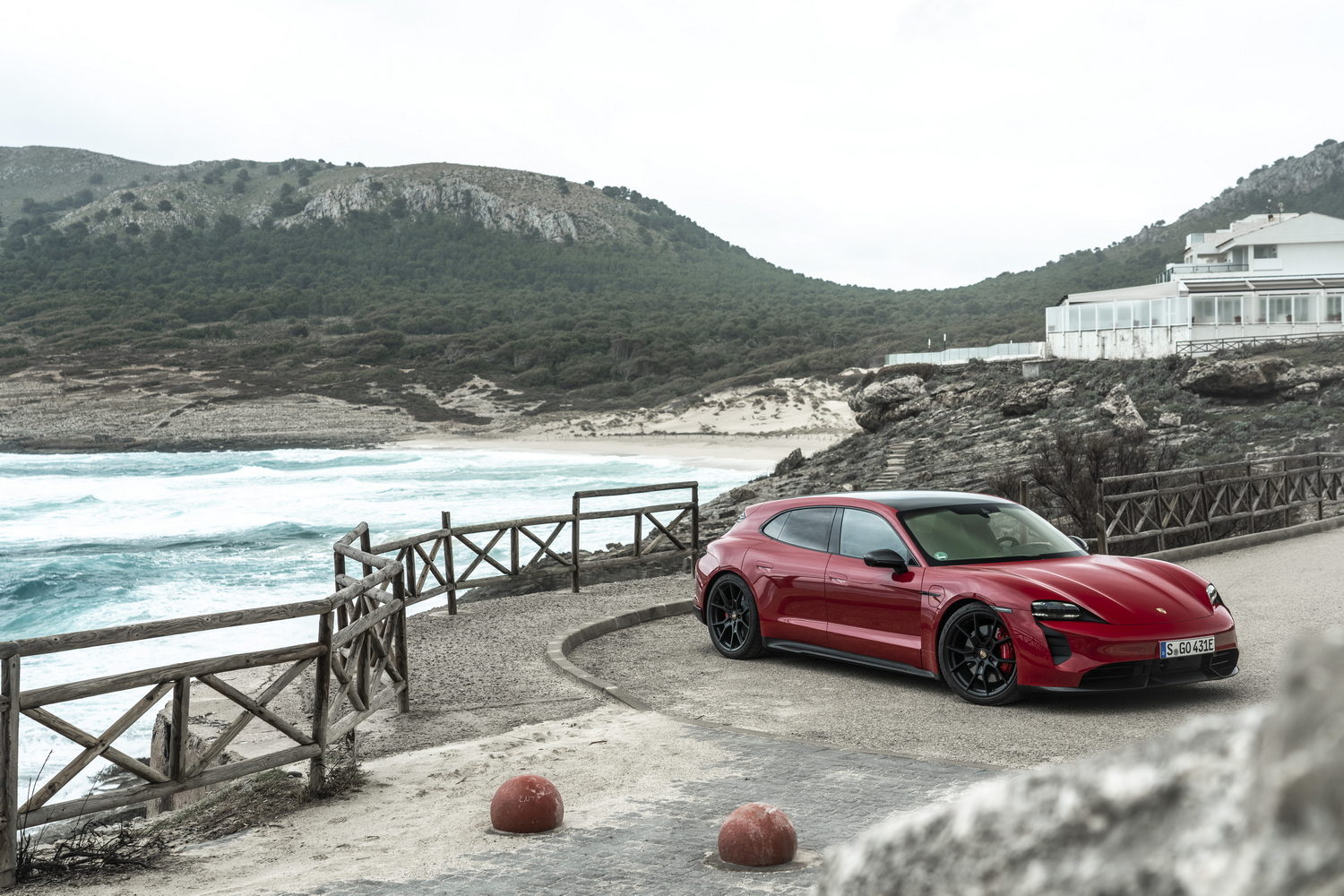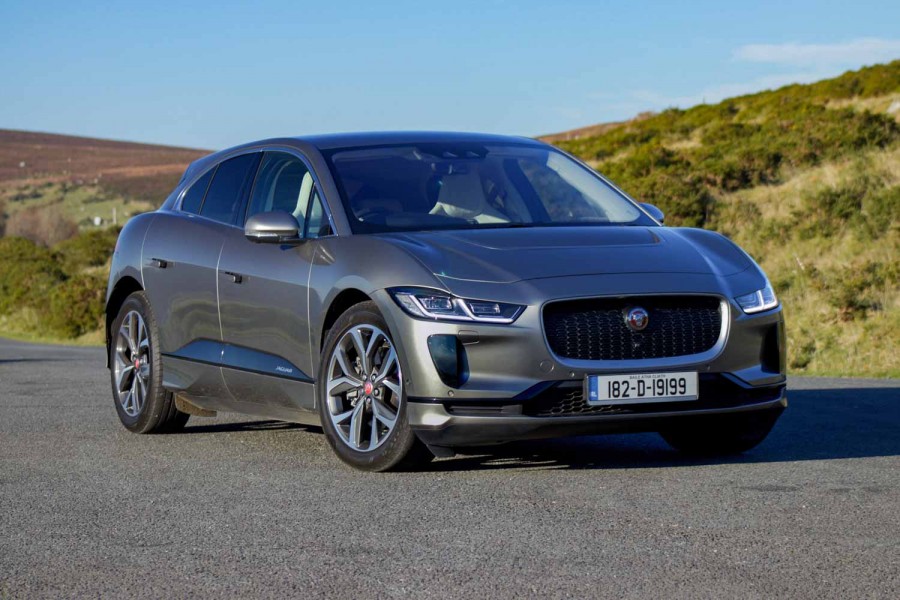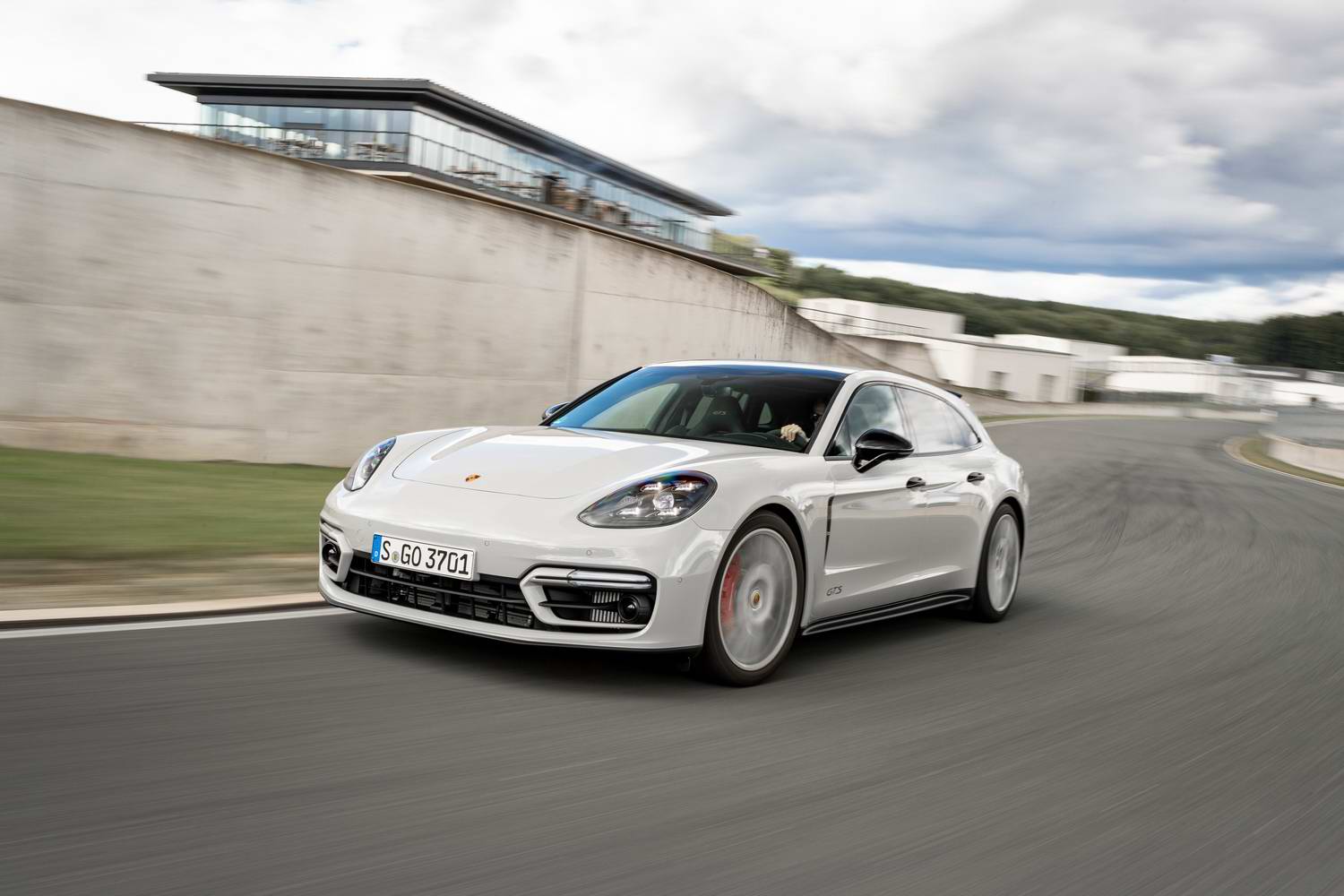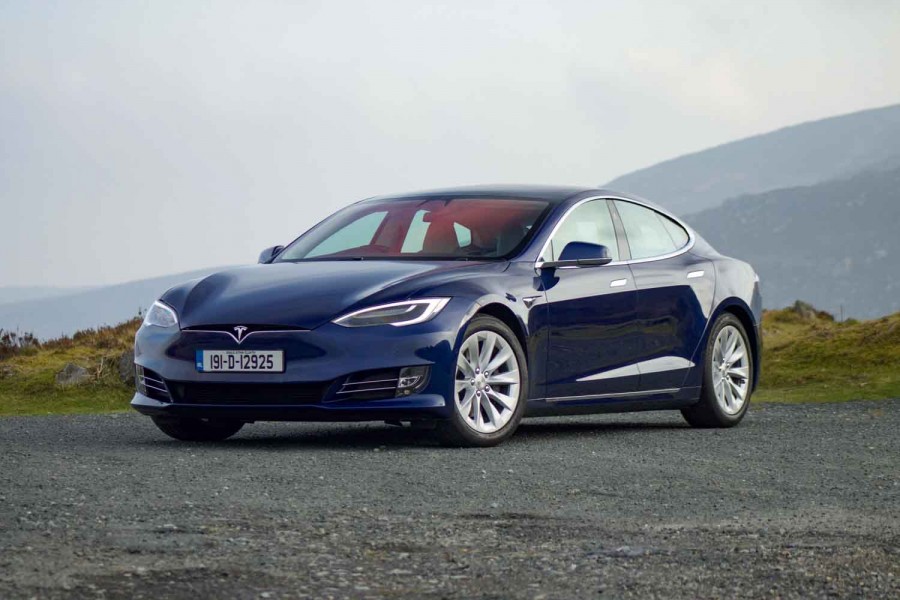From the moment it was launched, the Porsche Taycan has been one of our favourite electric cars. Since then, the zero-emission sports saloon has spawned the more rugged and more practical Cross Turismo variant, and now there's this: the new Sport Turismo. It's essentially a halfway house between the existing body styles, mixing the boot space of the Cross Turismo with the lower ride height and sporting intent of the standard Taycan. We sampled the new, mid-range GTS version to find out whether the sporty electric estate makes any sense.
In the metal
The Taycan was already quite a good-looking car, albeit in a slightly other-worldly kind of way. The front end looks a bit odd, with those slim headlights seemingly tucked away under a kind of eyebrow arrangement, but the proportions are spot on. Or at least we thought they were, until the Sport Turismo was revealed.
It has the same basic bodywork as the Cross Turismo, but it seems to suit the low-slung look much better. There's something of the Ferrari GTC4Lusso to it, but the Taycan is much cleaner and less fussy in its design. Befitting the spectacular driving experience, it has a kind of intent to the way it looks.
That may be helped by the GTS trim, which comes with all the usual Porsche GTS features, including Sport Design bumpers and black side skirts, as well as black window trim and black 20-inch alloys. Our test car also came with the optional carbon-fibre exterior trim, but it had the standard red brake callipers, rather than the yellow that denotes the optional ceramic brakes.
The interior is much the same as in any other Taycan, with three touchscreens to play with and a digital instrument cluster. There's also a sense that every single part has been engineered as fastidiously as the running gear. The quality is exceptional, and although one of the touchscreens feels a tad clunky and sluggish, it's every inch the premium car.
And because this is the GTS version, Porsche has also added suede-esque Race-Tex upholstery that's inspired by Porsche's motorsport exploits, as well as dark roof lining and brushed aluminium trim with a black anodised finish. Meanwhile, the driver and front passenger sit in sportier seats designed to hold them in place on a track.
But while the Sport Turismo feels much like any other Taycan for those in the front seats, those in the back will have a slightly different impression. All Taycans offer plenty of legroom for back-seat passengers, but the Sport Turismo and Cross Turismo models supplement that with a little extra headroom to keep taller passengers happy. And there's also a bigger boot, although the official figures suggest it isn't a lot larger.
Porsche's literature suggests a 446-litre luggage bay, which is only about 40 litres more than you get from a Taycan saloon. However, popping the tailgate reveals a much more versatile space than you find in the back of a four-door Taycan, and folding the rear seats away frees up a more impressive 1,212 litres of space. And that's before we mention the 84-litre tub under what would normally be called the bonnet. The Americans call that the 'frunk'.
That has been made possible by the packaging of the two-motor electric powertrain, which offers all-wheel drive and a grand total of 517hp. For short periods, the zero-emission drive system can churn out a massive 598hp. And the 93.4kWh battery pack allows a maximum all-electric range of 490km - just a handful of kilometres fewer than the saloon.
Driving it
Not only is this the first time we've driven the Taycan Sport Turismo, but it's also the first time we've sampled the Taycan GTS on the road. As we only drove the Taycan GTS saloon on track before, this is essentially uncharted territory. But there are no shocks here: the Taycan is still awesome.
Let's start with that powertrain, which is shared with the GTS saloon and sees an electric motor installed at each end of the car. The front motor works with a single-speed gearbox, while the rear motor is paired with a two-speed transmission. Under normal conditions, the front motor is effectively disconnected to improve range, but using one of the sportier driving modes brings it back into play. With power distributed between all four wheels, it's capable of 0-100km/h in 3.7 seconds and a top speed of 250km/h.
But in more economical modes, it offers an impressive 490km range between charges. That's only slightly less than you get from the equivalent Taycan saloon, and it's more than enough for most customers' needs. It's just a pity Porsche's clever technology will be at the mercy of the Irish charging network.
That isn't to say the Sport Turismo doesn't have its issues. We thought the unengaging brakes might be a feature of the ceramic system fitted to our GTS saloon test car, but they resurfaced in the Sport Turismo, which came with the conventional standard brakes. That said, they're still incredibly effective, and though the Taycan weighs well over two tonnes, it had no problem slowing down.
We remain unconvinced by the GTS's synthetic noise generation system, too, with the Porsche Electric Sport Sound feeling strangely other-worldly when it arrives in Sport and Sport Plus modes. It might be a more impressive sound than in the Turbo and 4S versions of the Taycan, but it doesn't add much to the experience.
Nevertheless, the Sport Turismo is utterly stunning, with very similar ride and handling characteristics to the Taycan saloon. We were worried the GTS model might feel less supple than its siblings, but even with the big estate bodywork and the slightly stiffer suspension set-up it feels every bit as comfortable as 'lesser' Taycans. Admittedly, our test on smooth Spanish roads was hardly representative of more undulating Irish asphalt, but it felt composed and compliant. Generally speaking, we expect the Sport Turismo to strike a good balance between comfort and handling when it arrives on these shores.
Although that might be underselling the Taycan slightly, because the way it handles is nothing short of stellar. As with the saloon, the steering feels heavy and a touch too numb, but the raw agility is incredible. Small turns of the wheel elicit an almost instantaneous response from the front wheels, aided by bountiful grip and suspension that keeps that slightly taller bodywork from moving too much. It leans slightly more than the saloon, of course, but it's more stable than you might imagine.
What you get for your money
Irish prices are yet to be announced for the GTS in saloon or Sport Turismo guises, but we have a reasonable idea of how the pricing will work. As far as we can tell, the GTS saloon will split the difference between the €106,954 4S and the €148,752 Turbo, while the Sport Turismo will only be marginally more expensive than its four-door sibling. That could mean the 4S Sport Turismo will come in at around €108,000, while the Turbo Sport Turismo hits about €150,000.
That said, it's unlikely that many customers will buy a basic Taycan. The equipment list will be plentiful, with the three-screen arrangement and navigation, as well as parking sensors and two-zone climate control all included. We expect heated seats to feature, too, but some customers will unquestionably be lured by more lavish options.
The carbon-fibre features fitted to our test car seem likely to win favour with customers, and rear-axle steering, a 360-degree parking camera and ceramic brakes are all going to be popular. As will the optional panoramic roof, which comes with a liquid crystal film allowing the driver to instantly frost any one of the nine sections in the glass. Porsche says the system blocks the UV rays from the sun, but ensures the cabin stays airy. In the dark cabin of the GTS, it feels like a must-have.
Summary
The Taycan is a brilliant electric car, and the Sport Turismo body shape merges the saloon's handling with the Cross Turismo practicality very well. In fact, we'd go so far as to say the Sport Turismo is now the Taycan to order. But what about the GTS specification?
When we drove the Taycan GTS saloon, we said it would make most sense on a track, with the 4S and Turbo models proving better value for those who only use their car on the road. But the Sport Turismo is never likely to be used in such a manner, so GTS trim feels somewhat redundant. Go for a 4S Sport Turismo instead.

